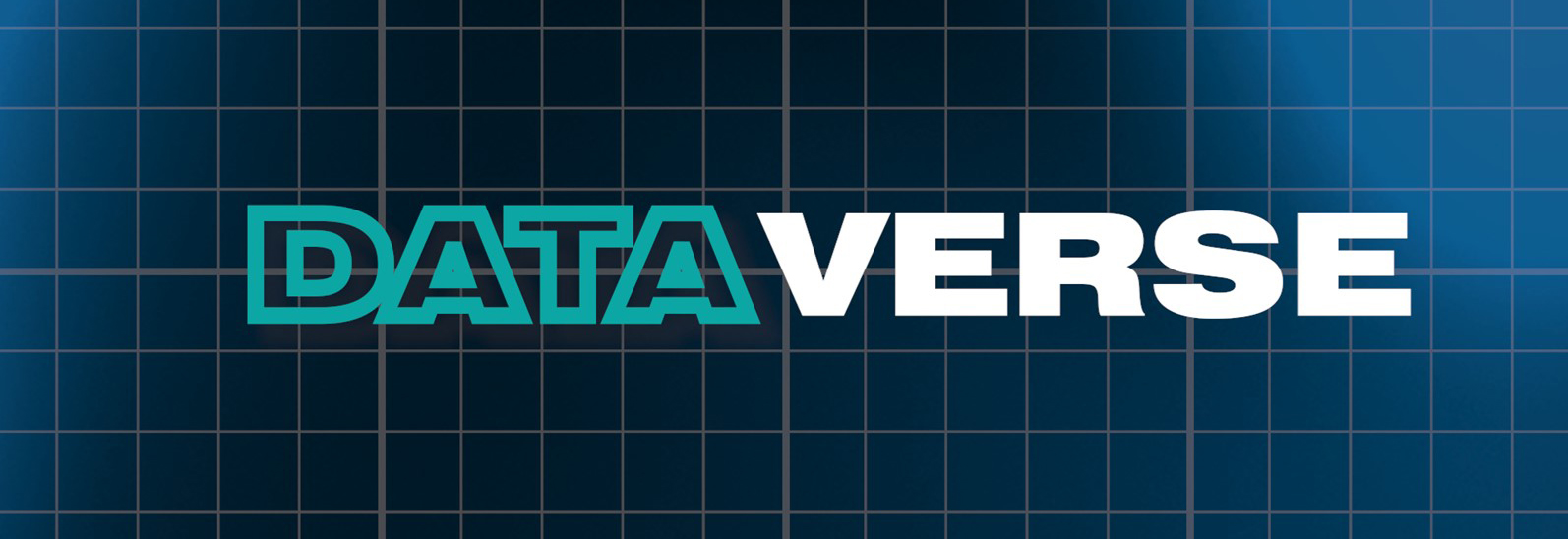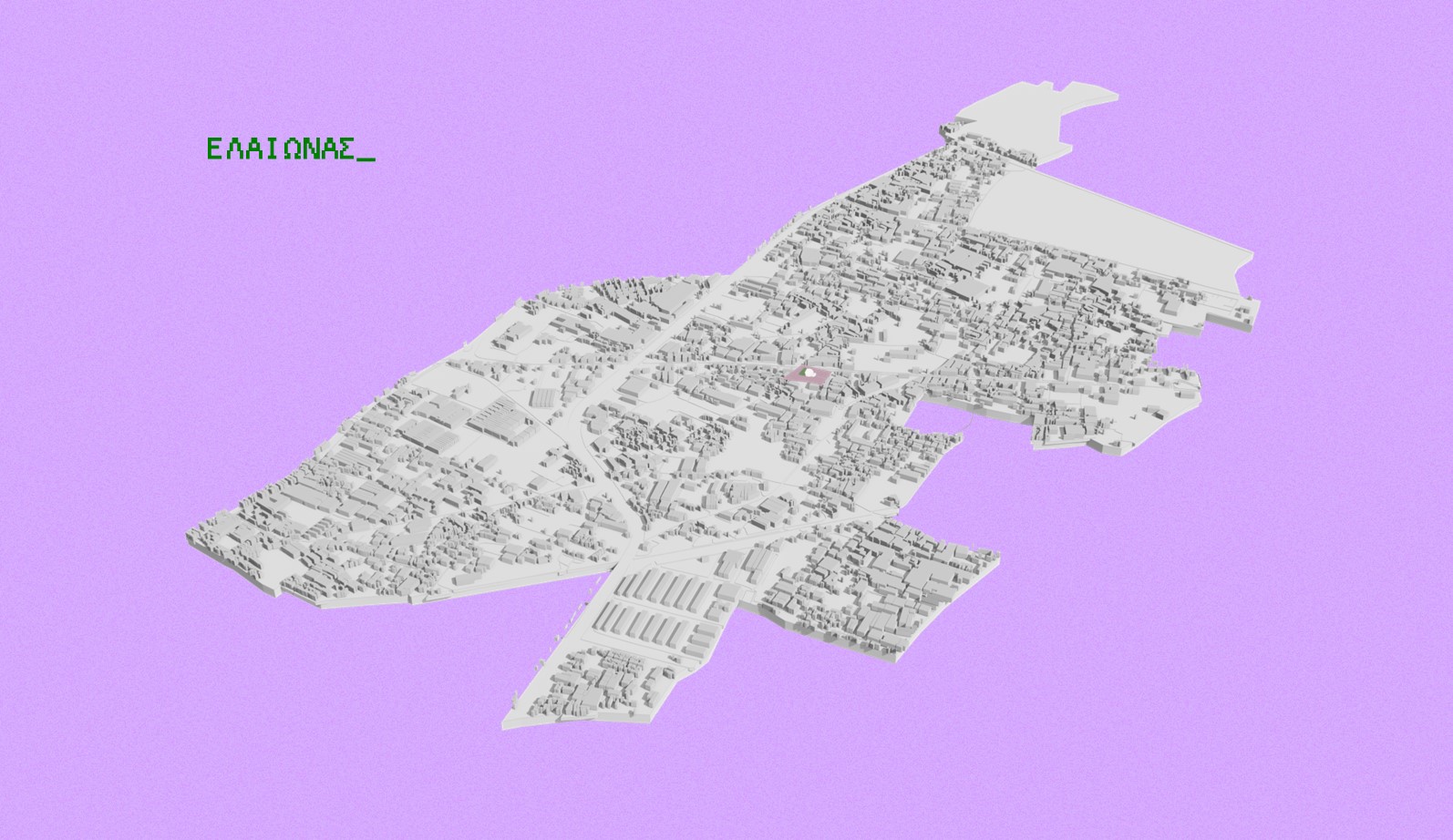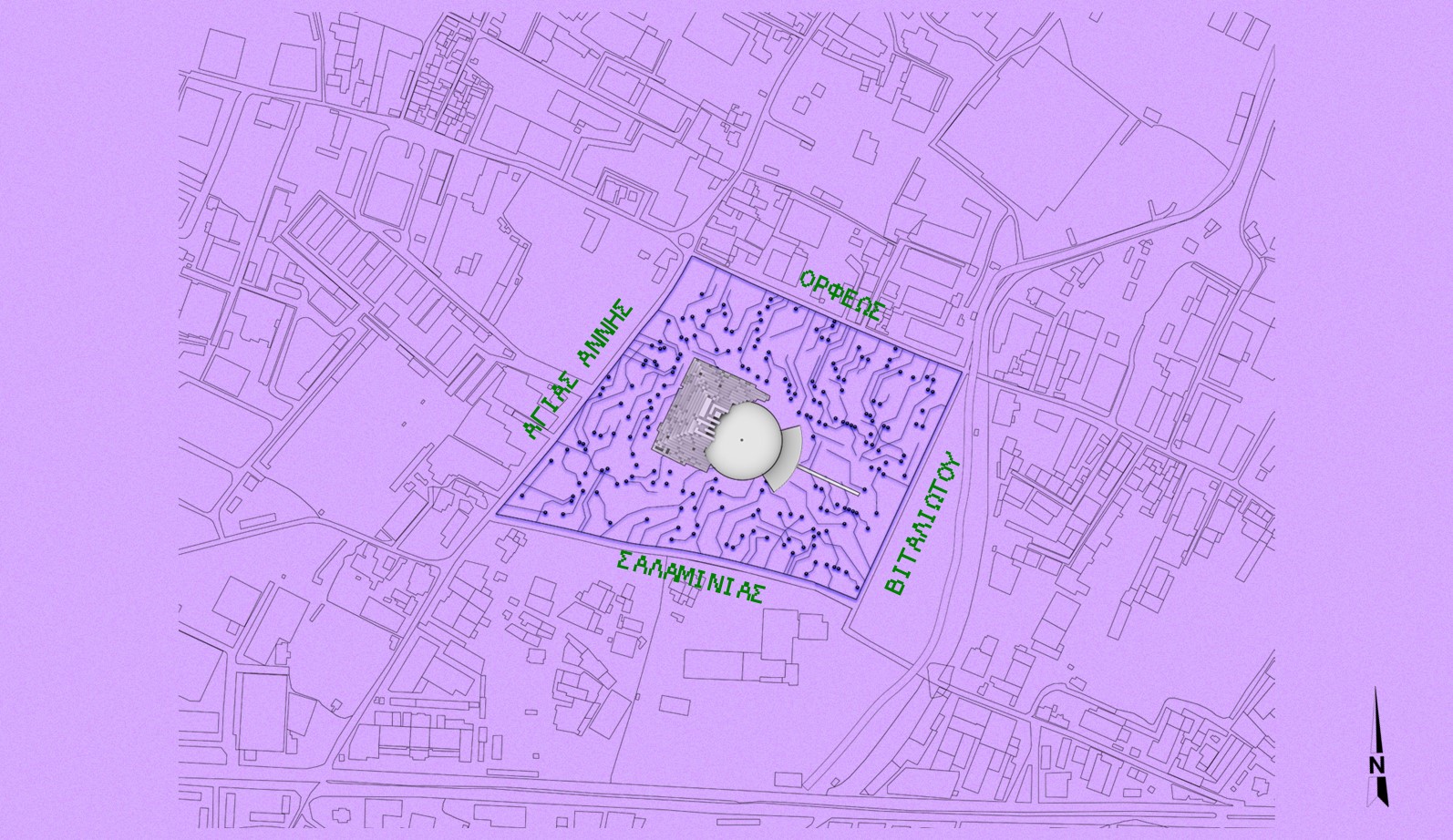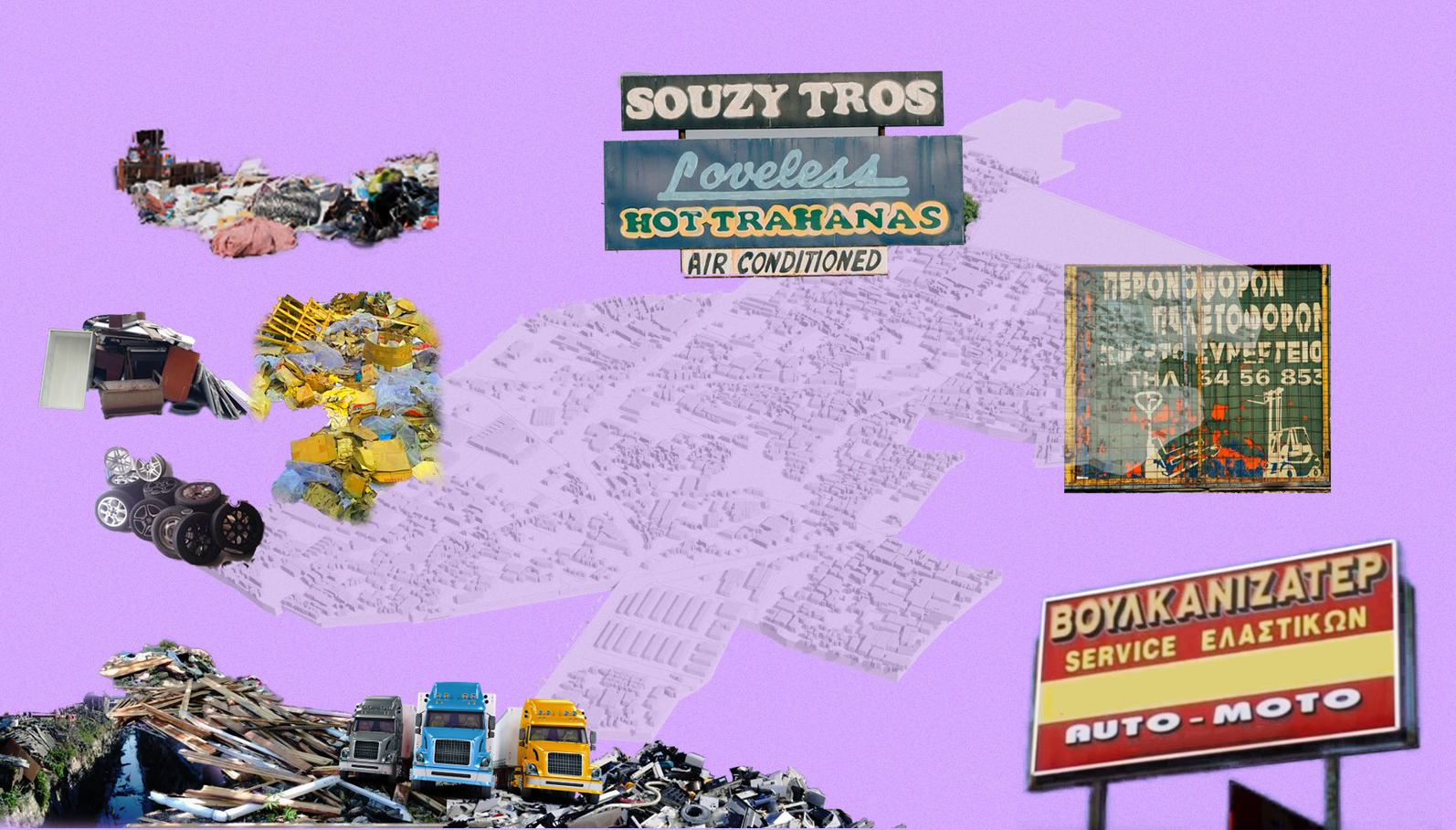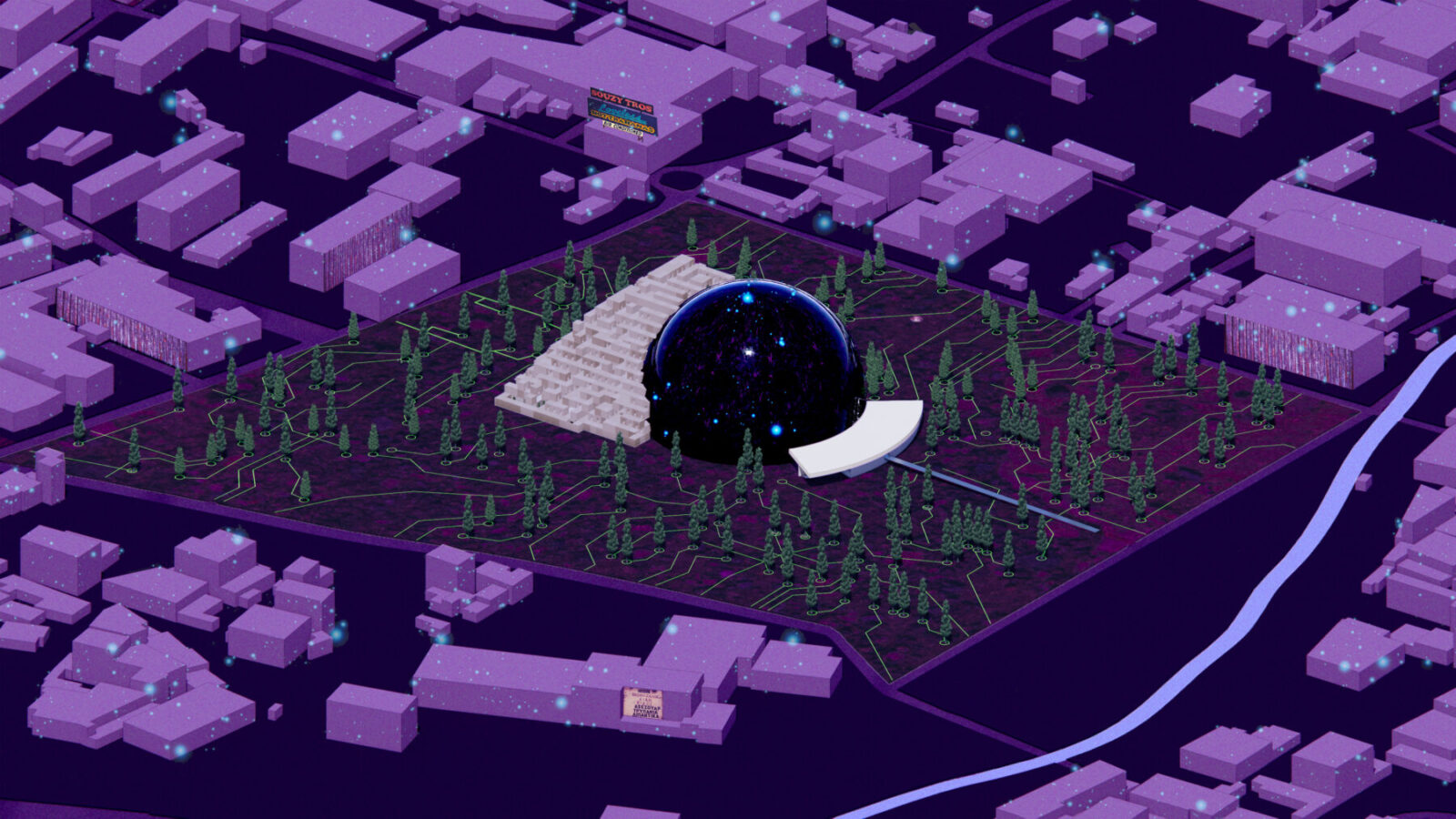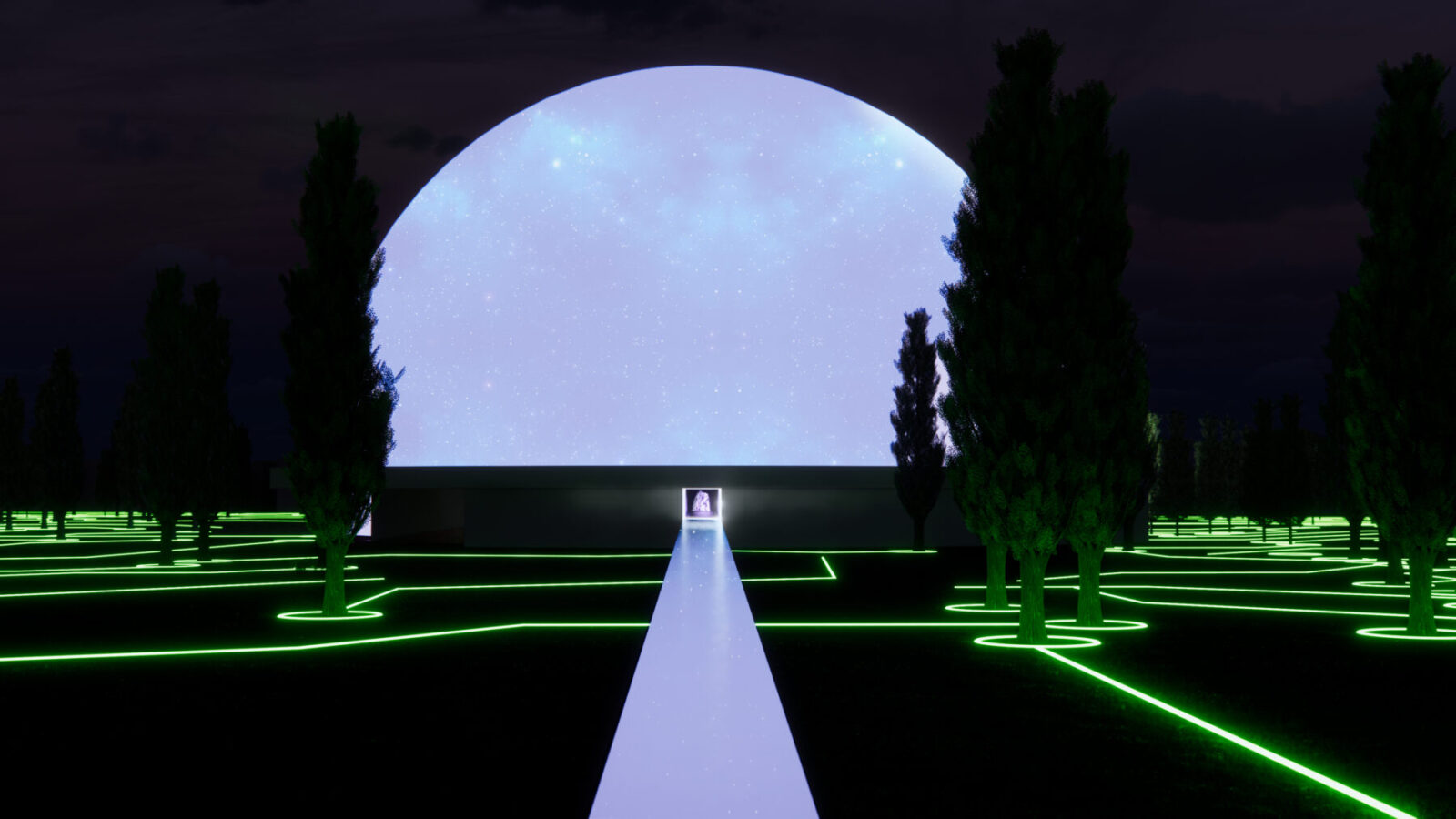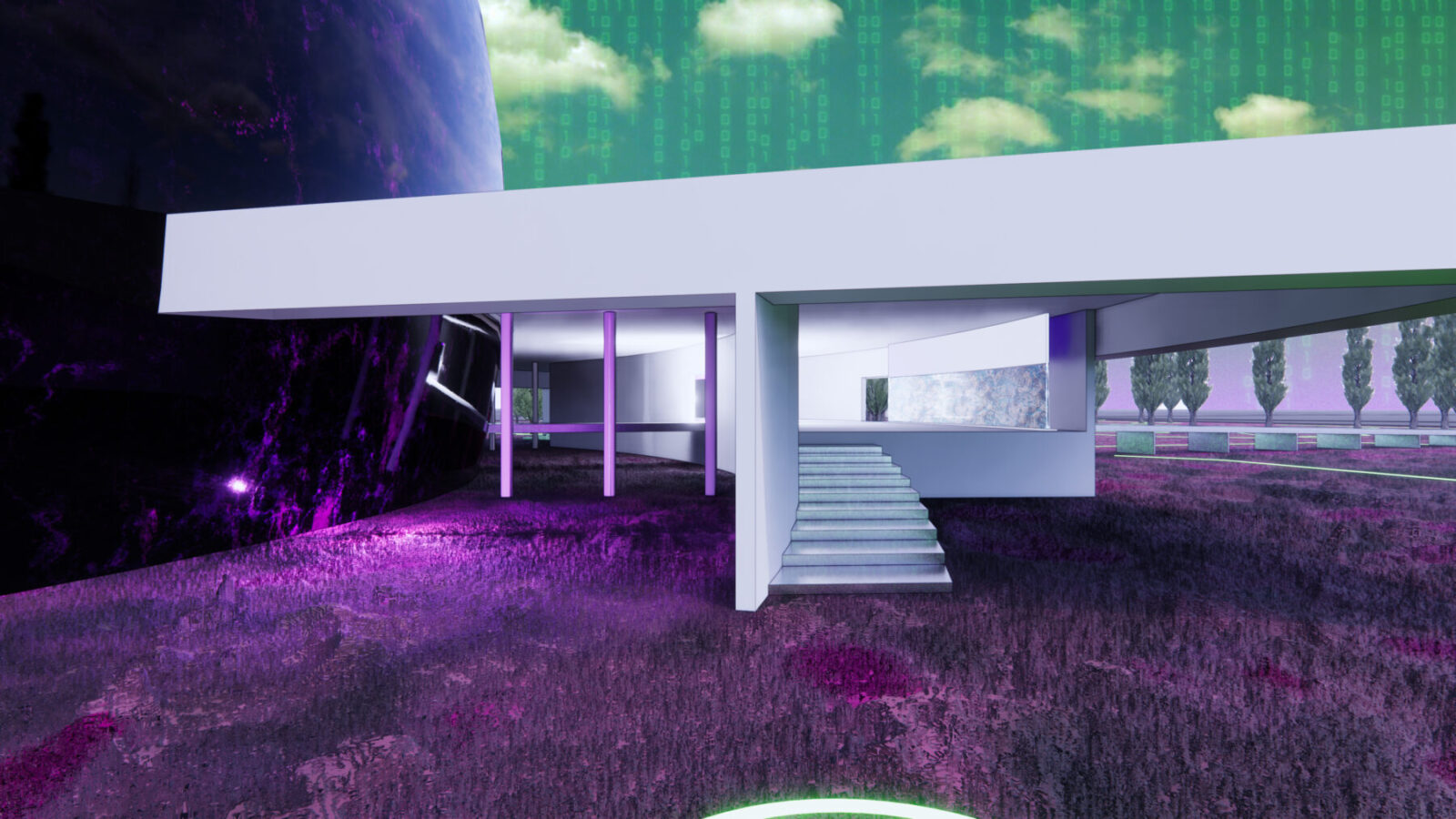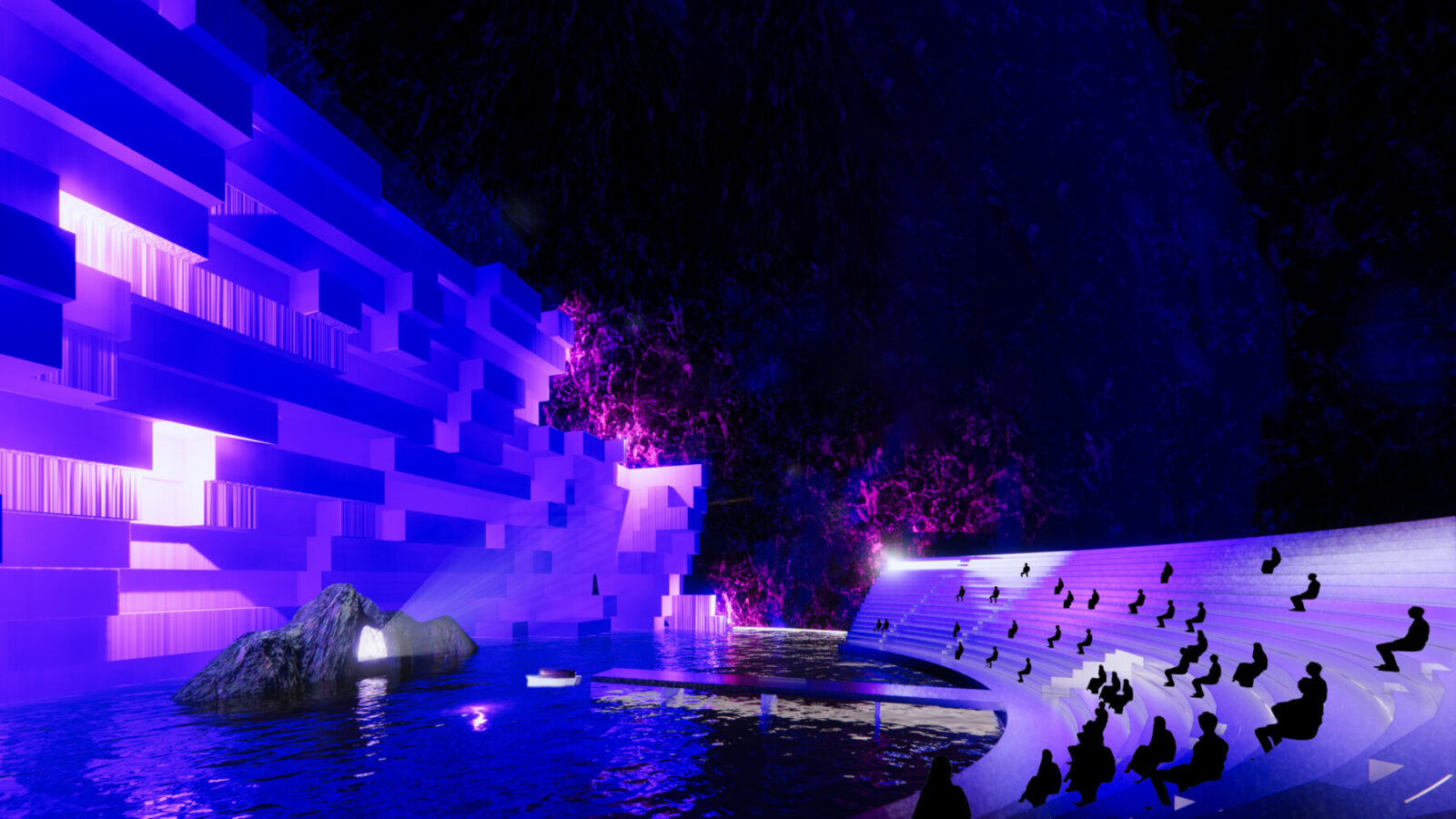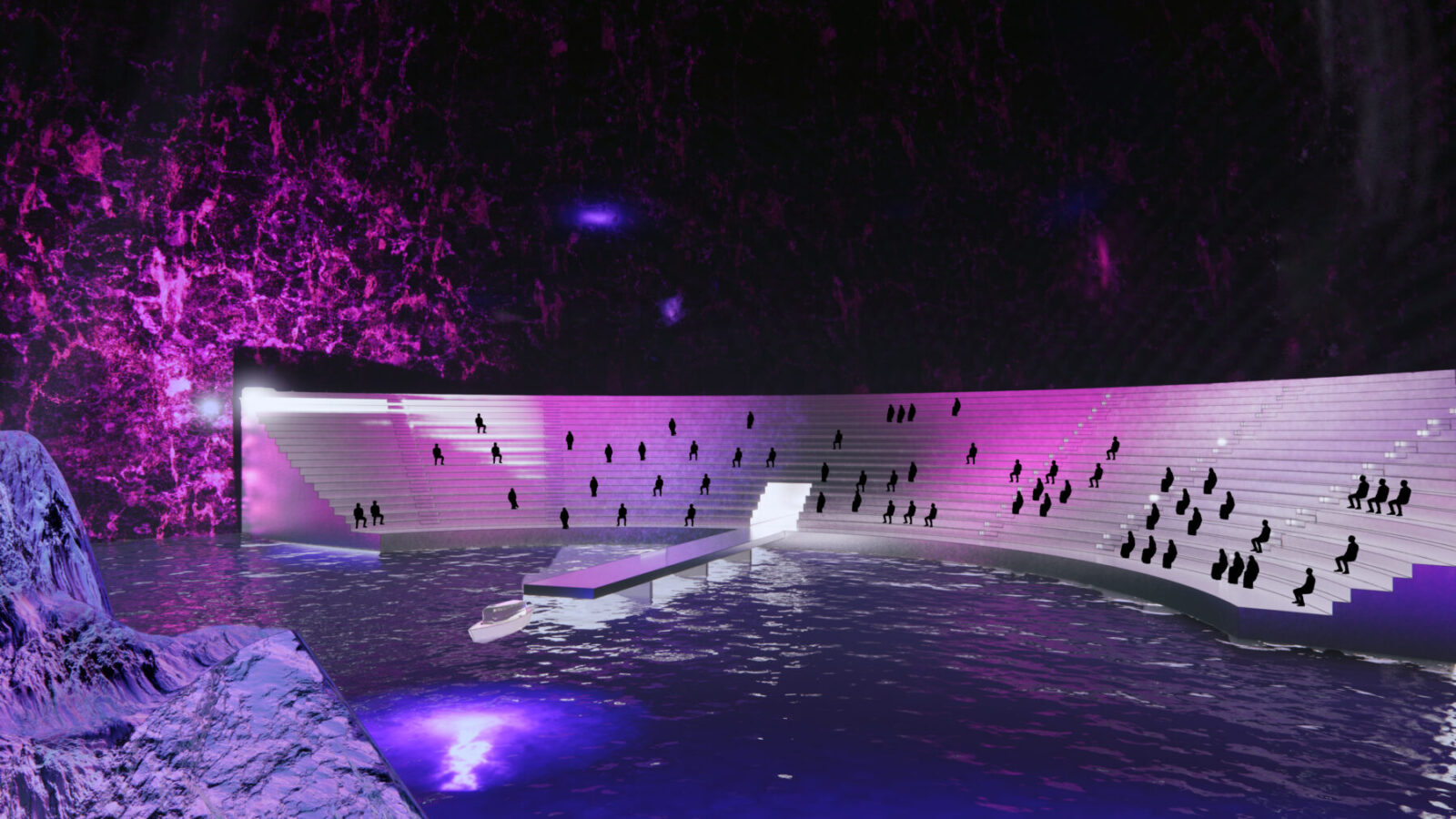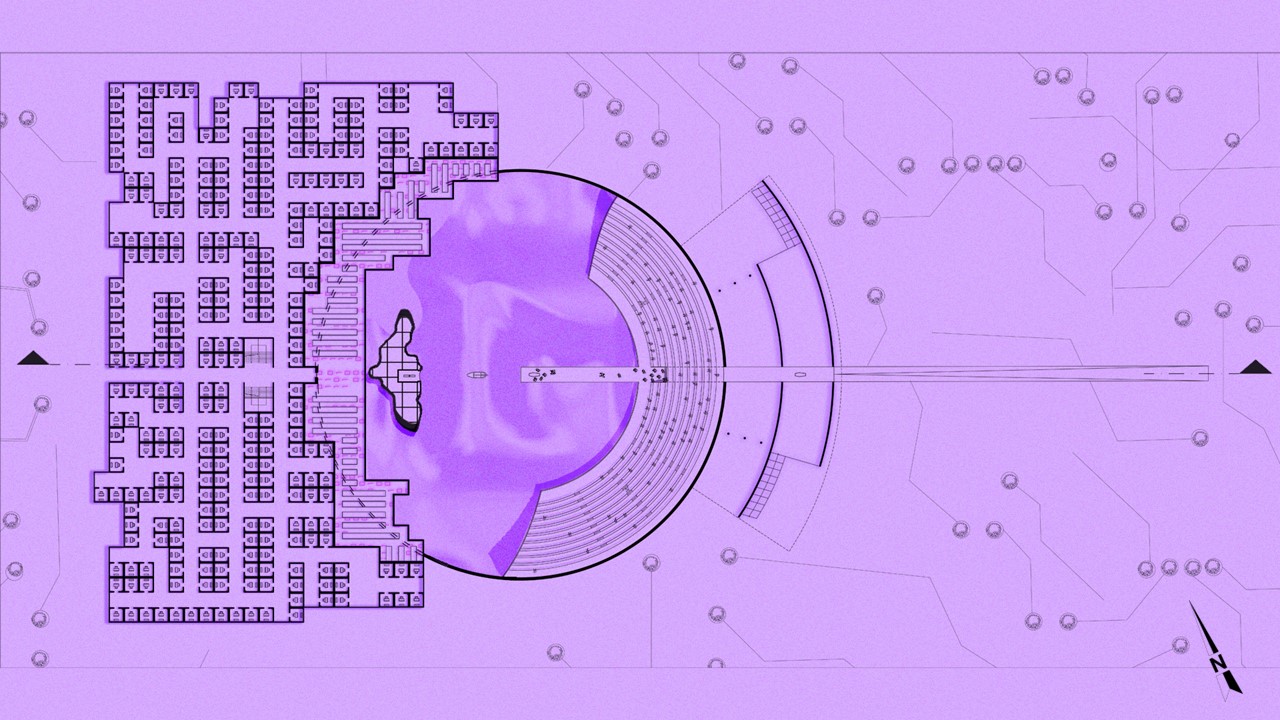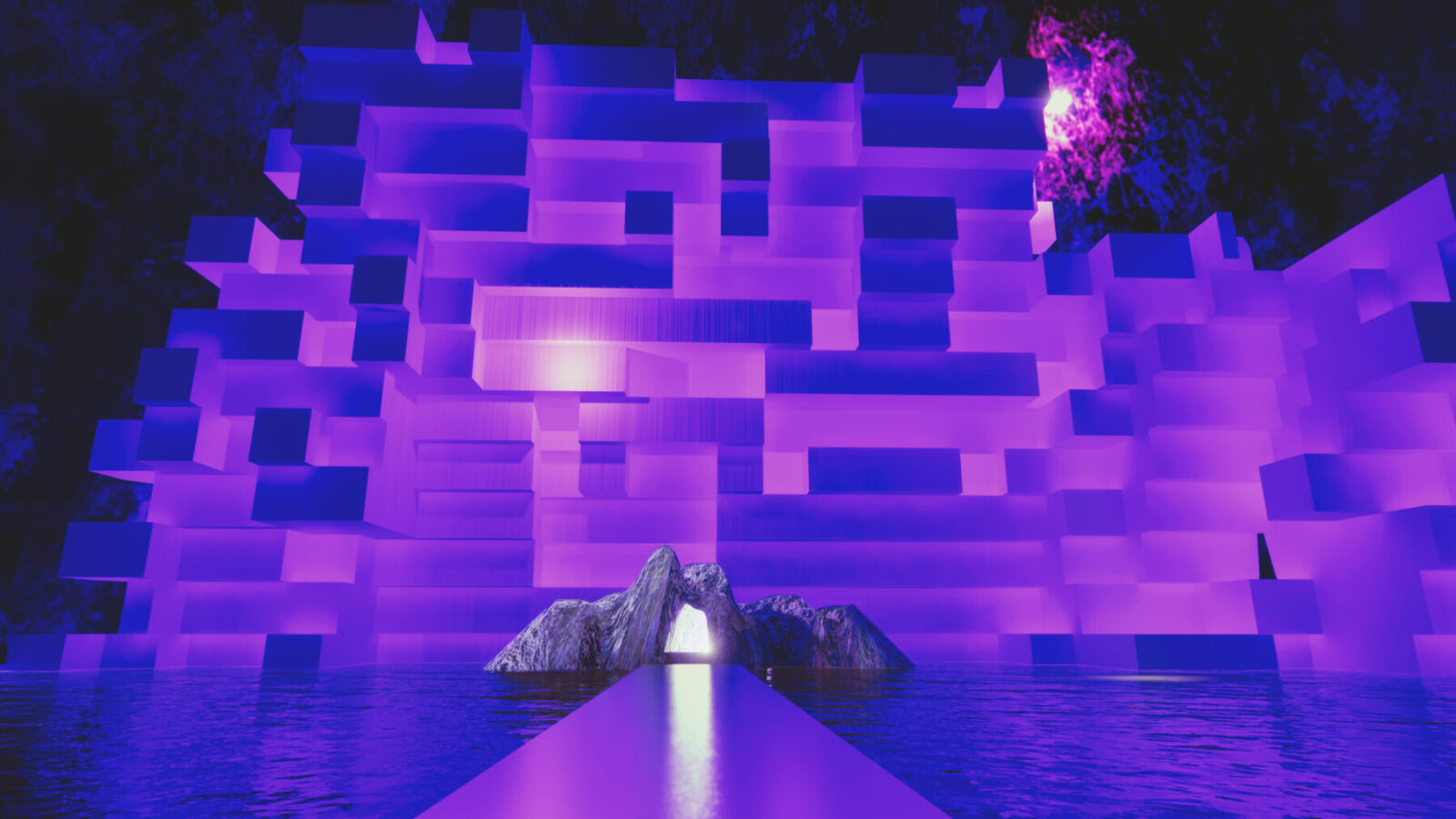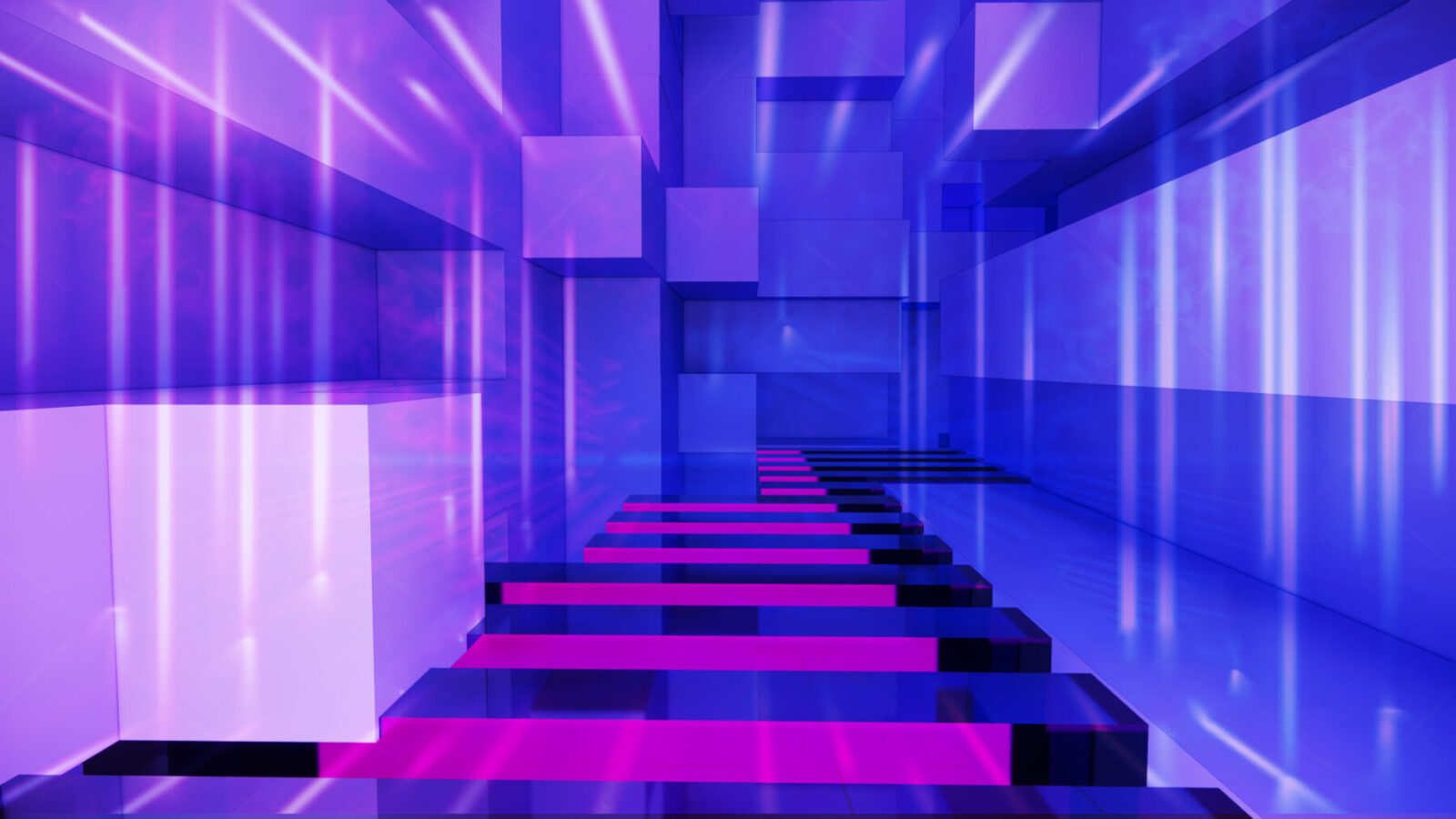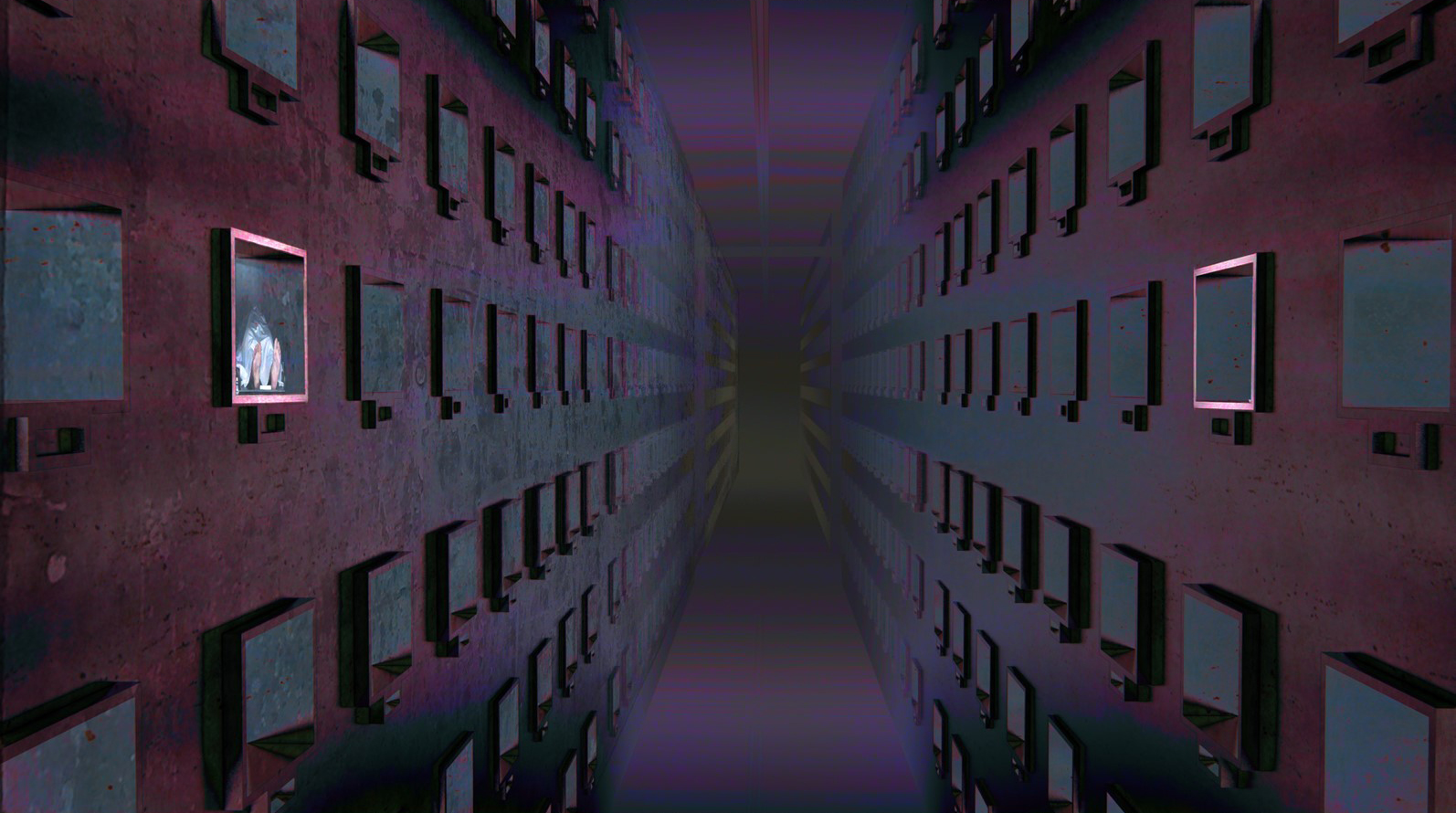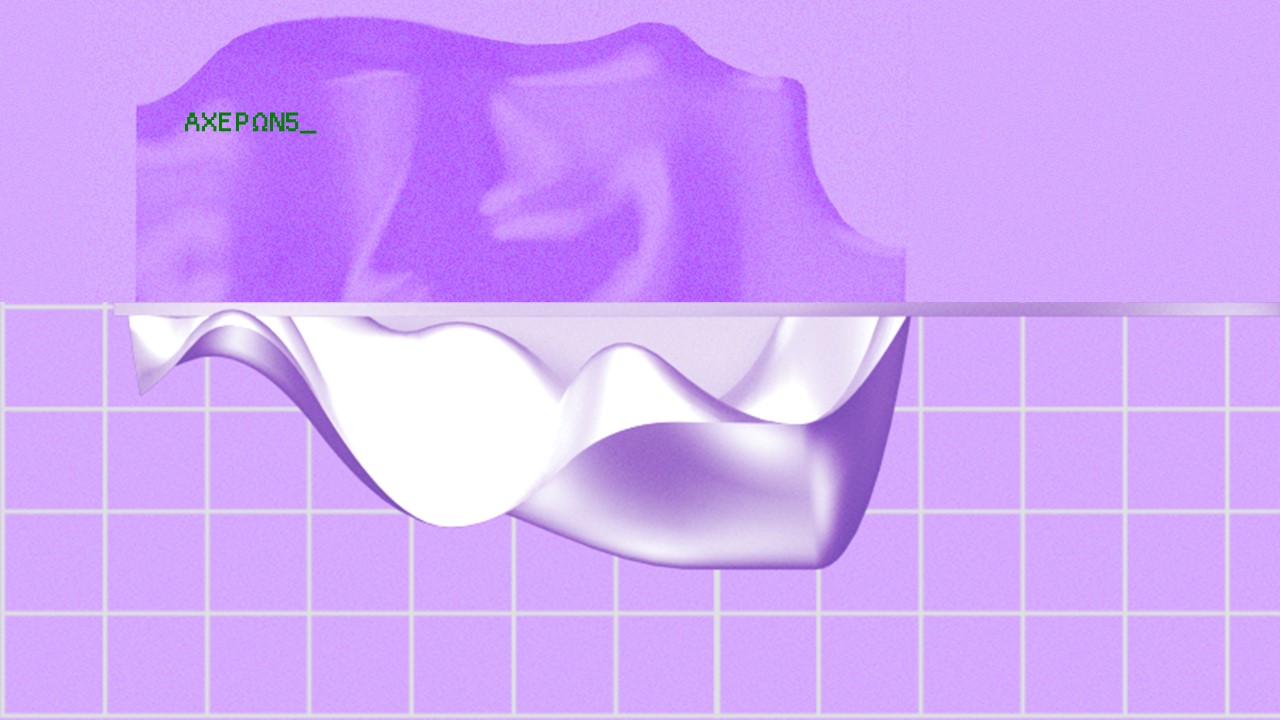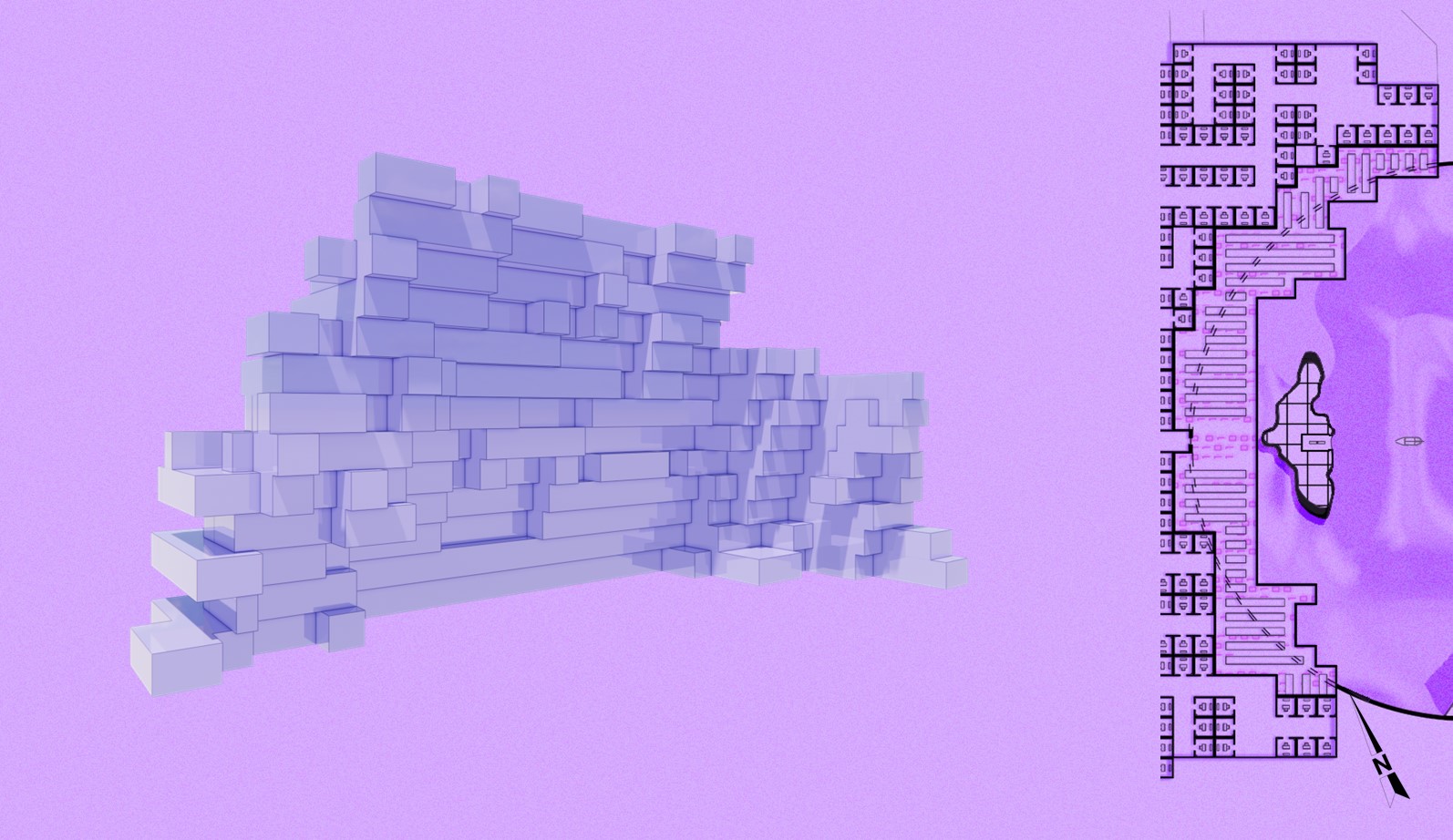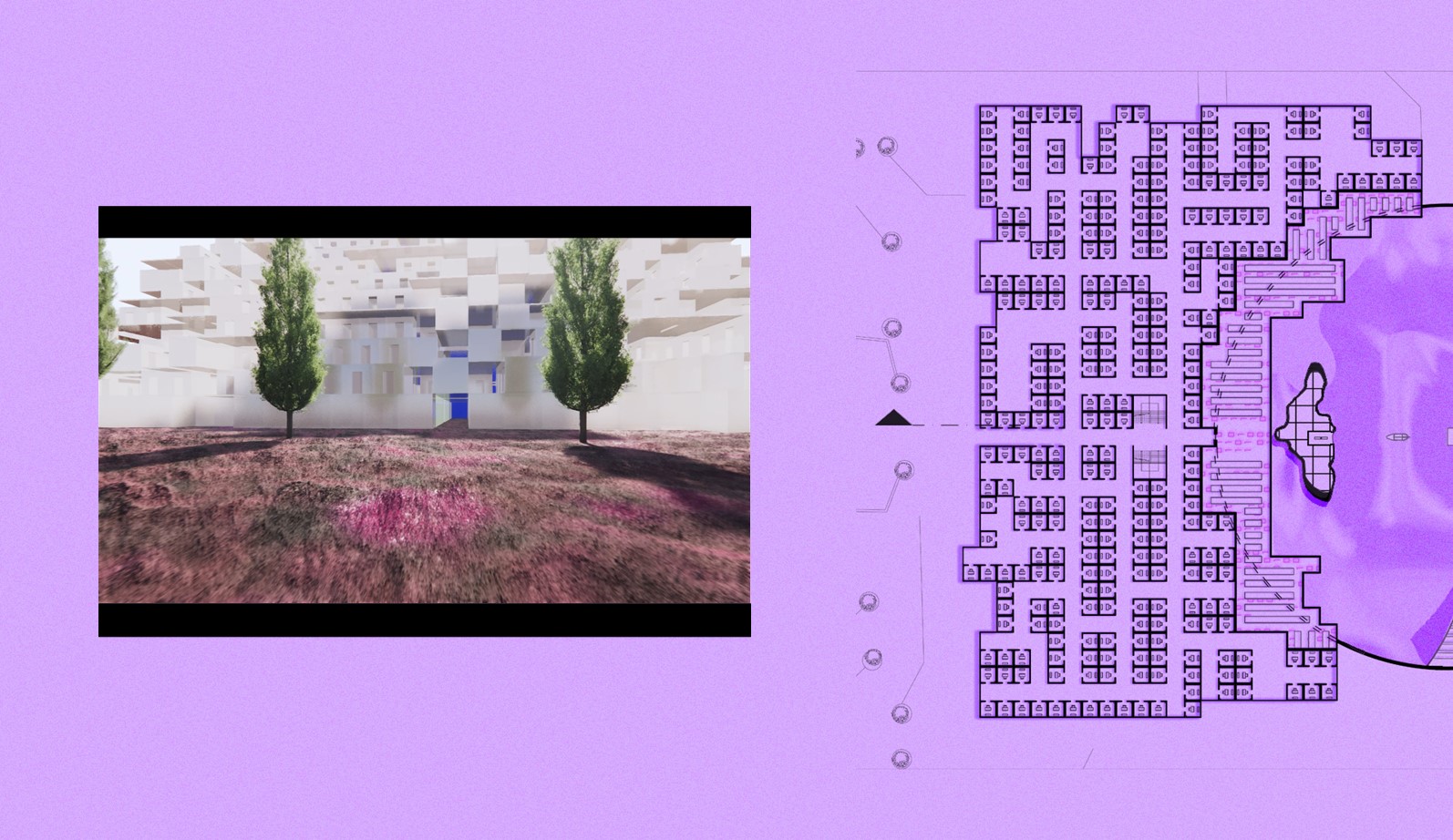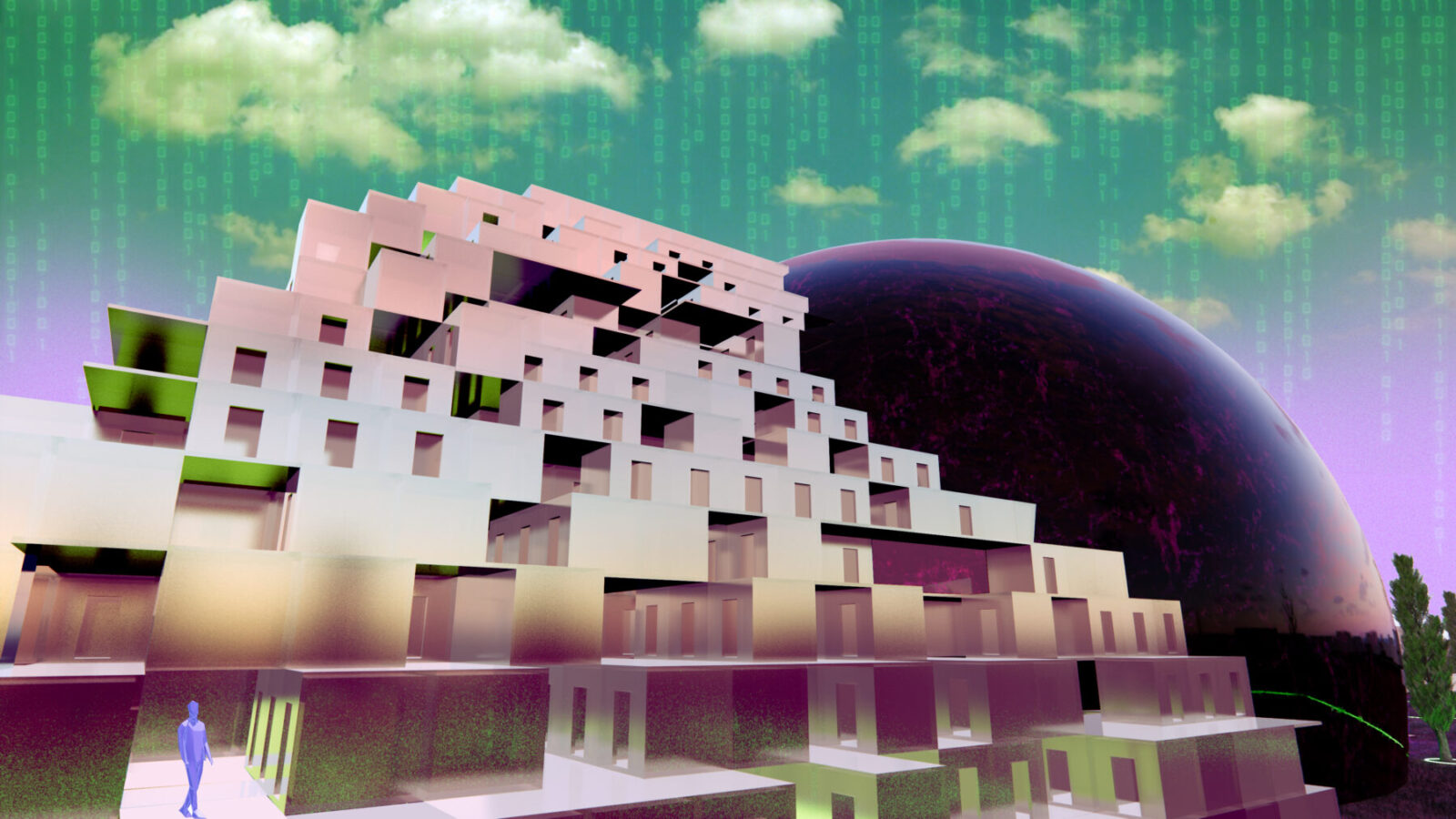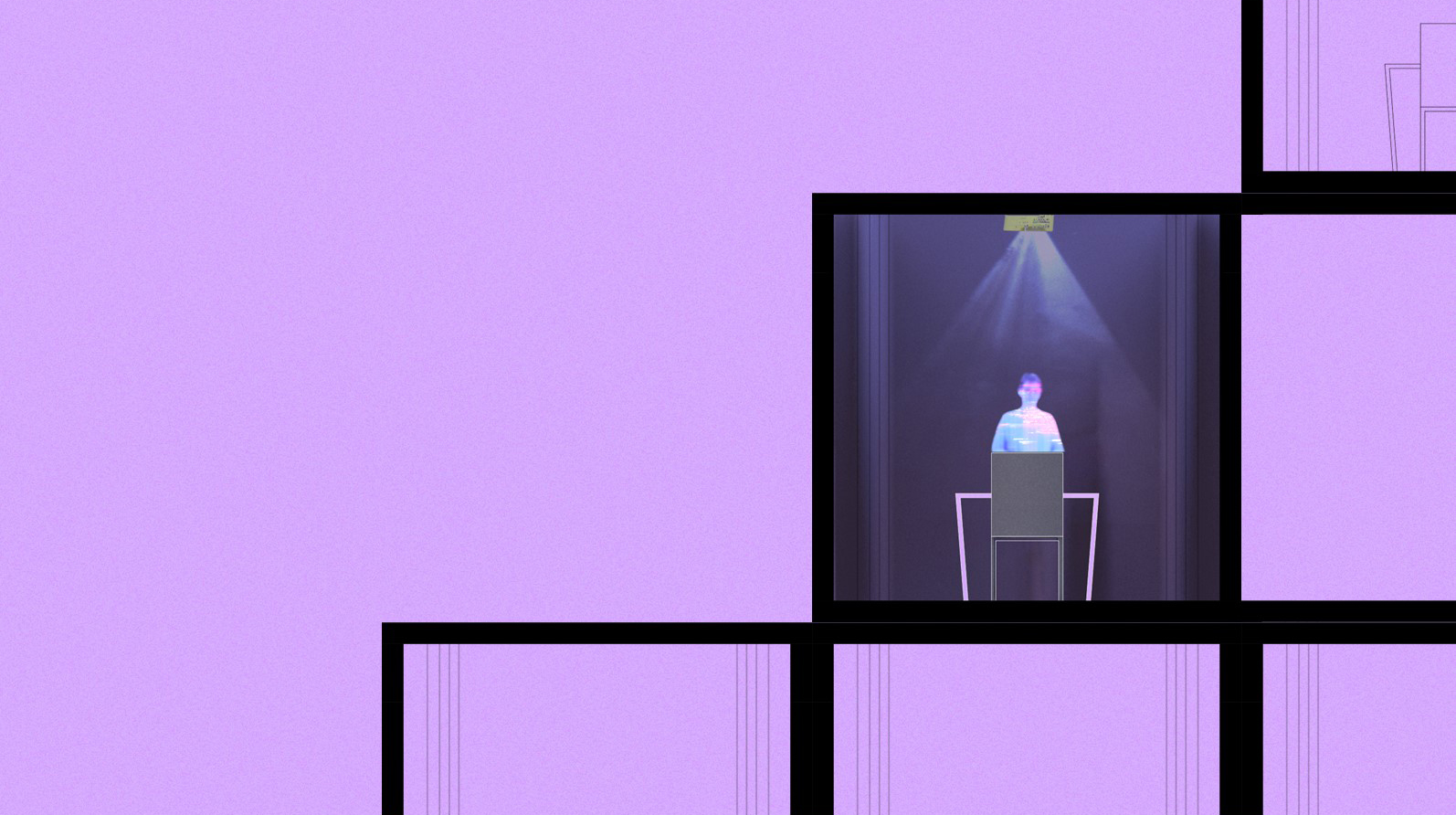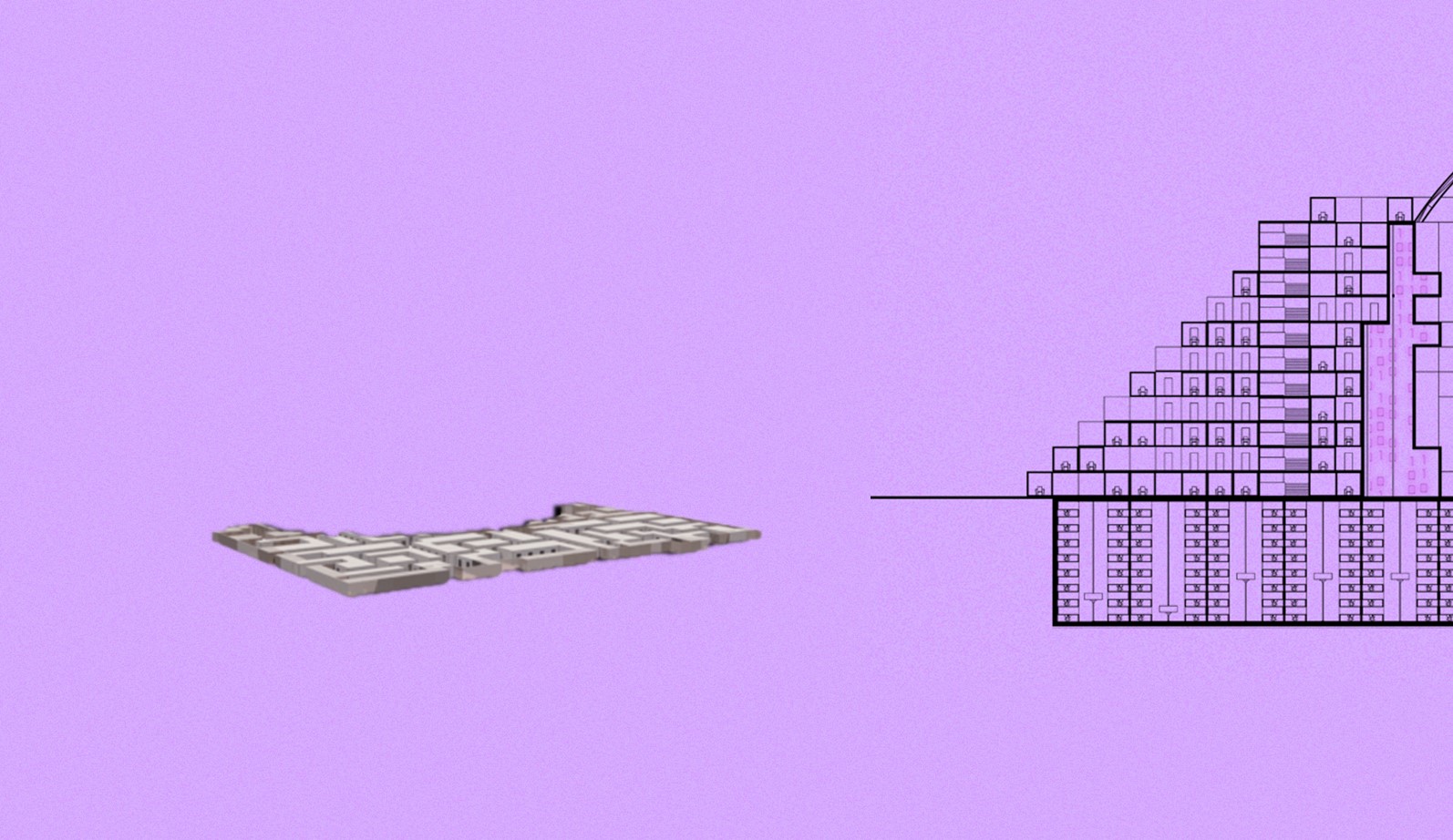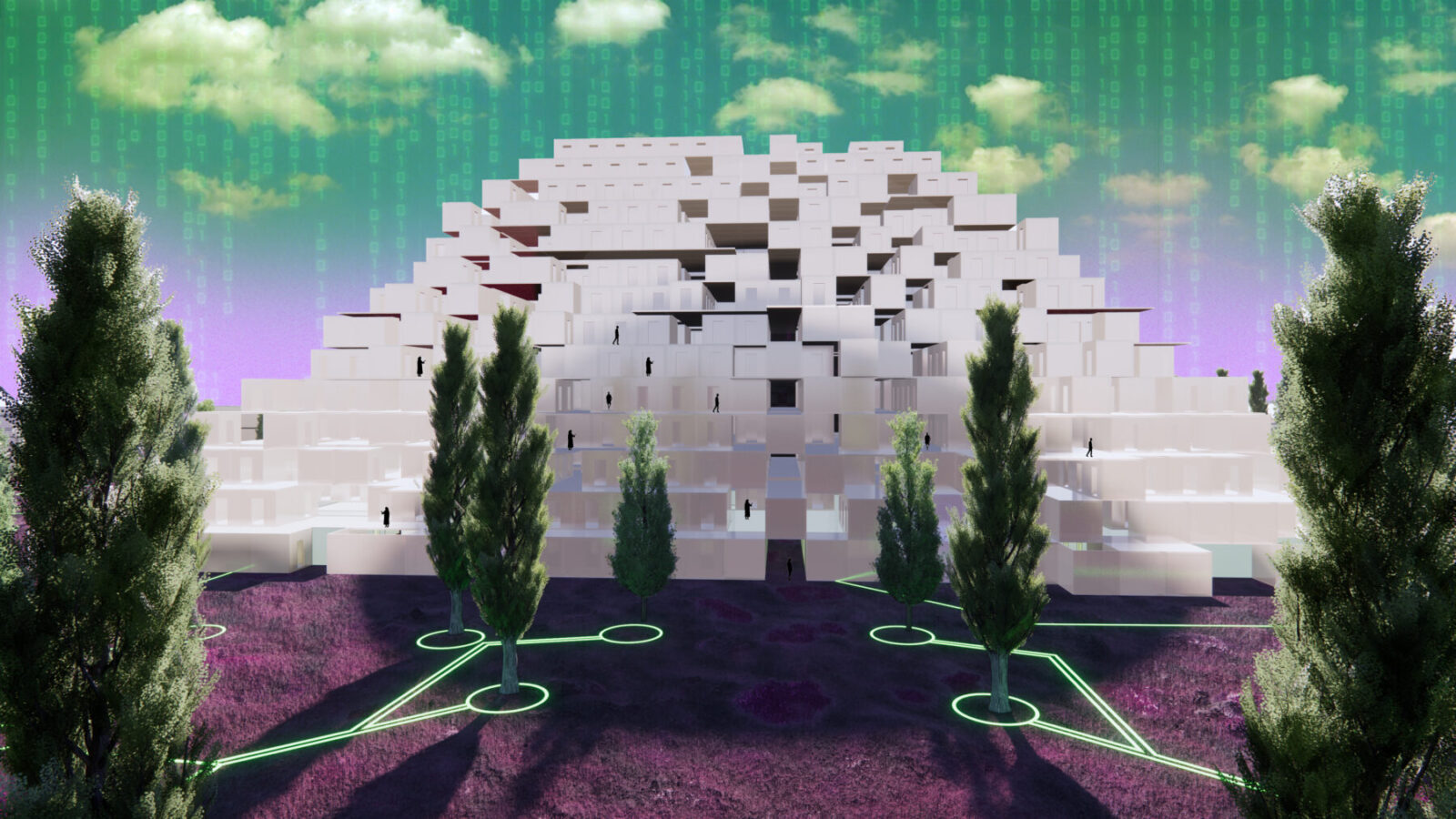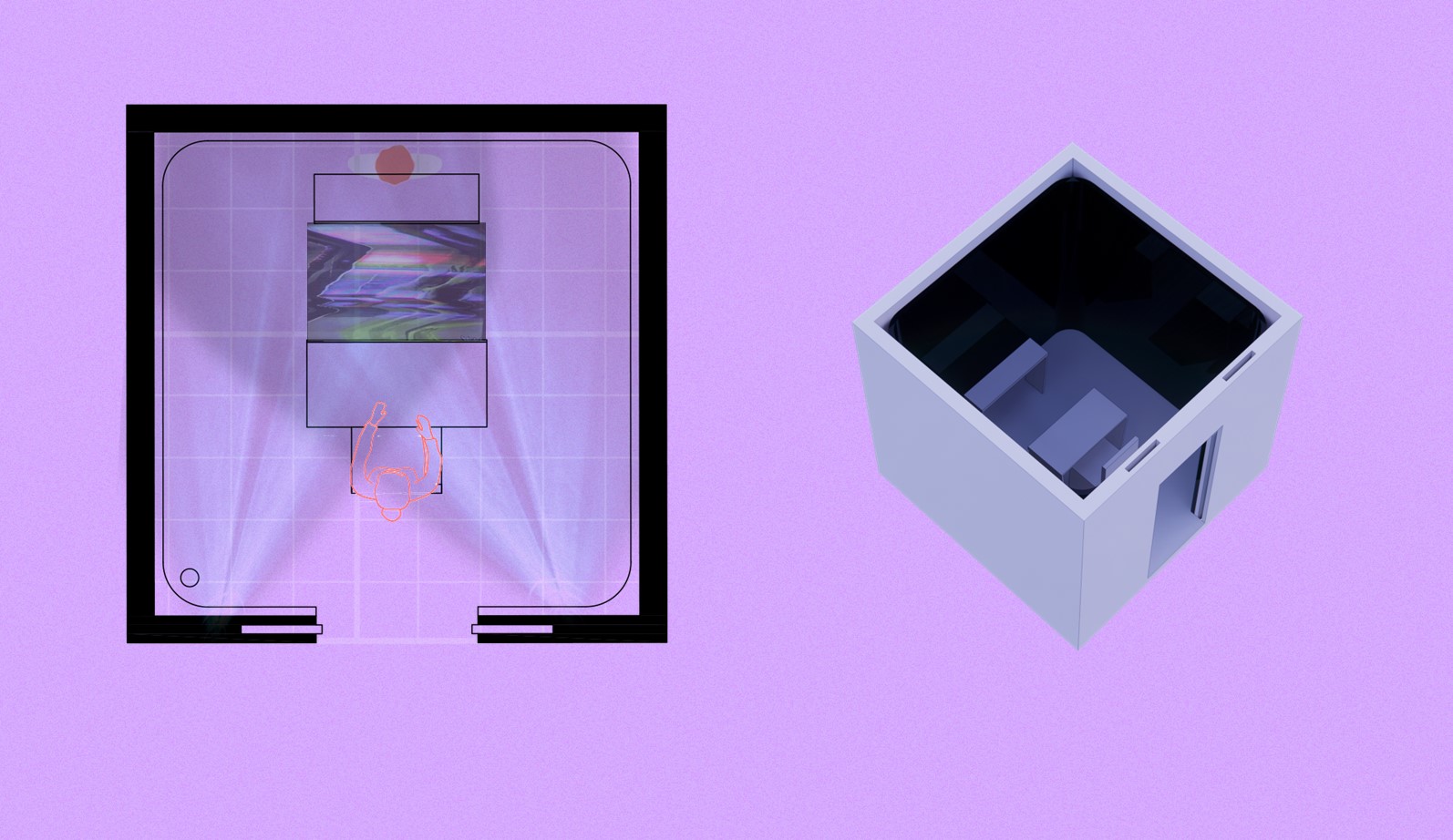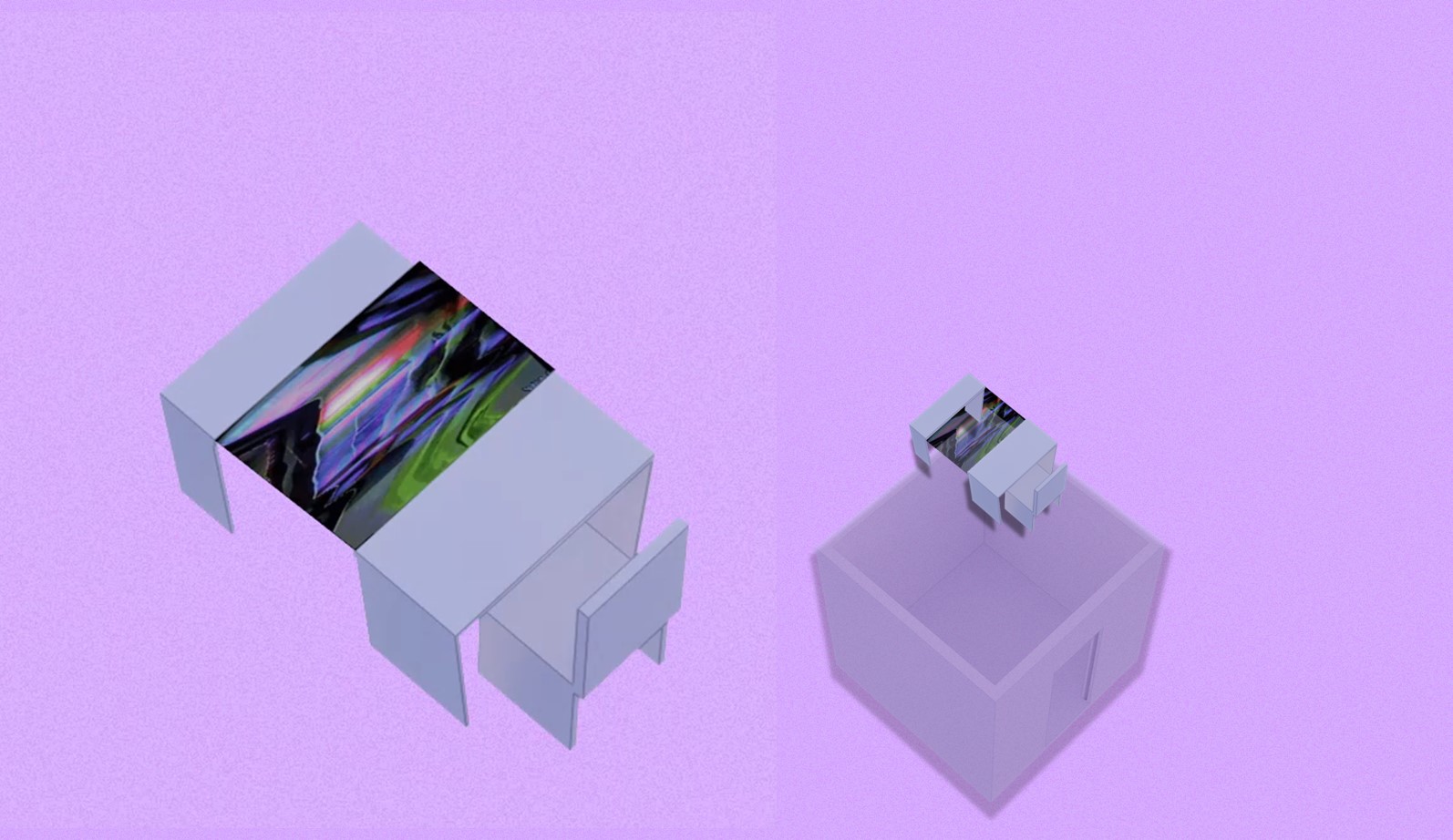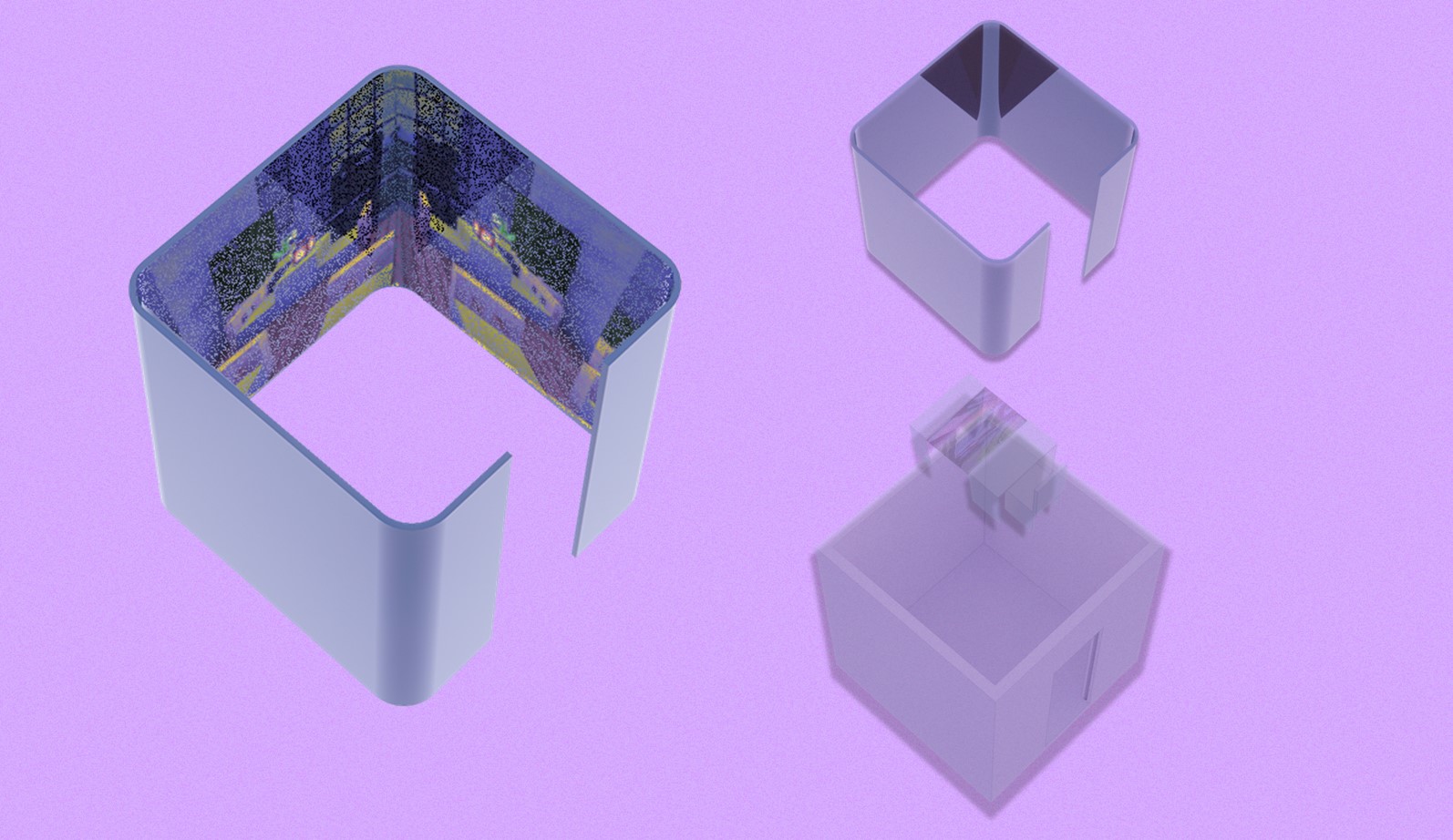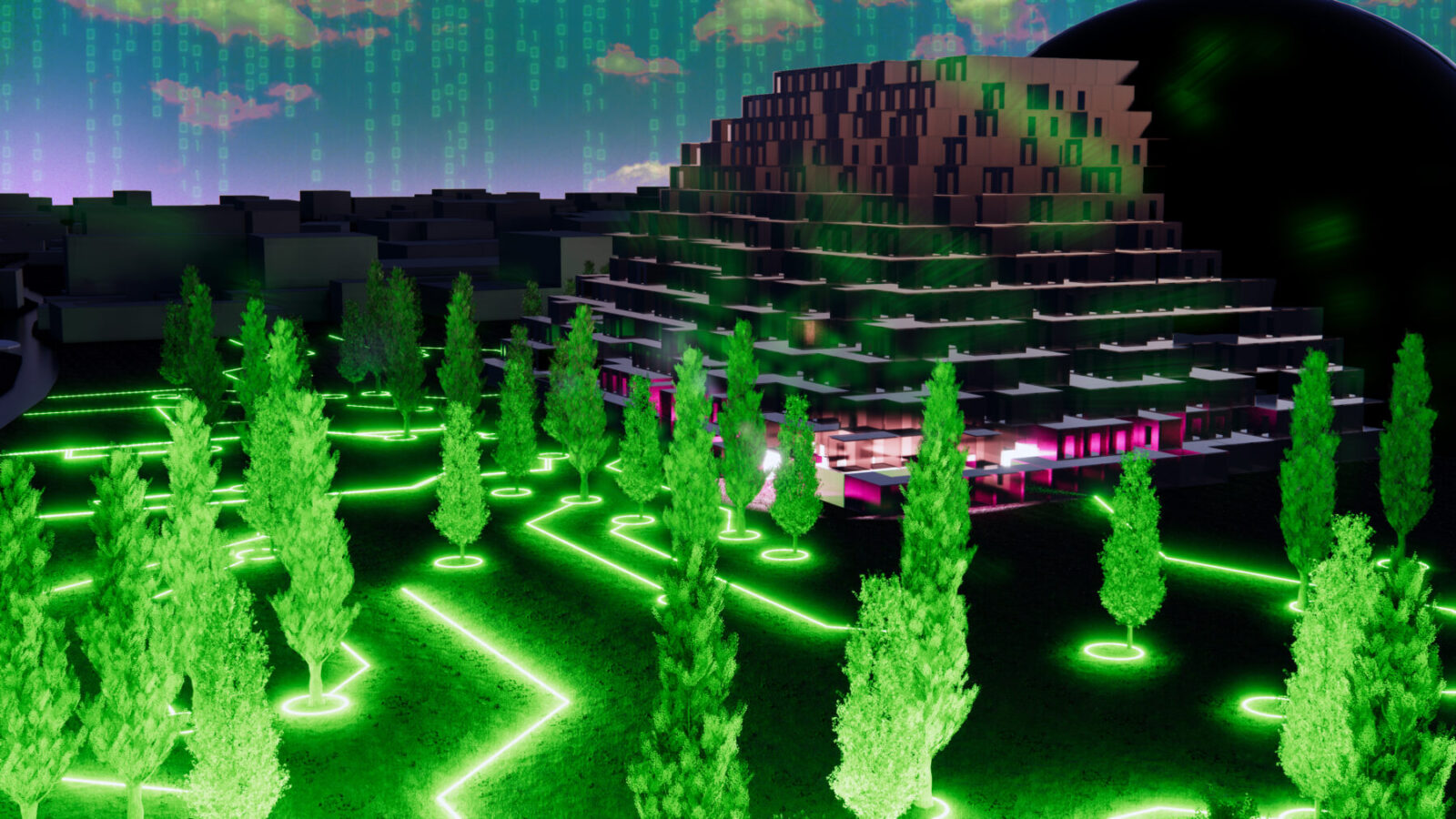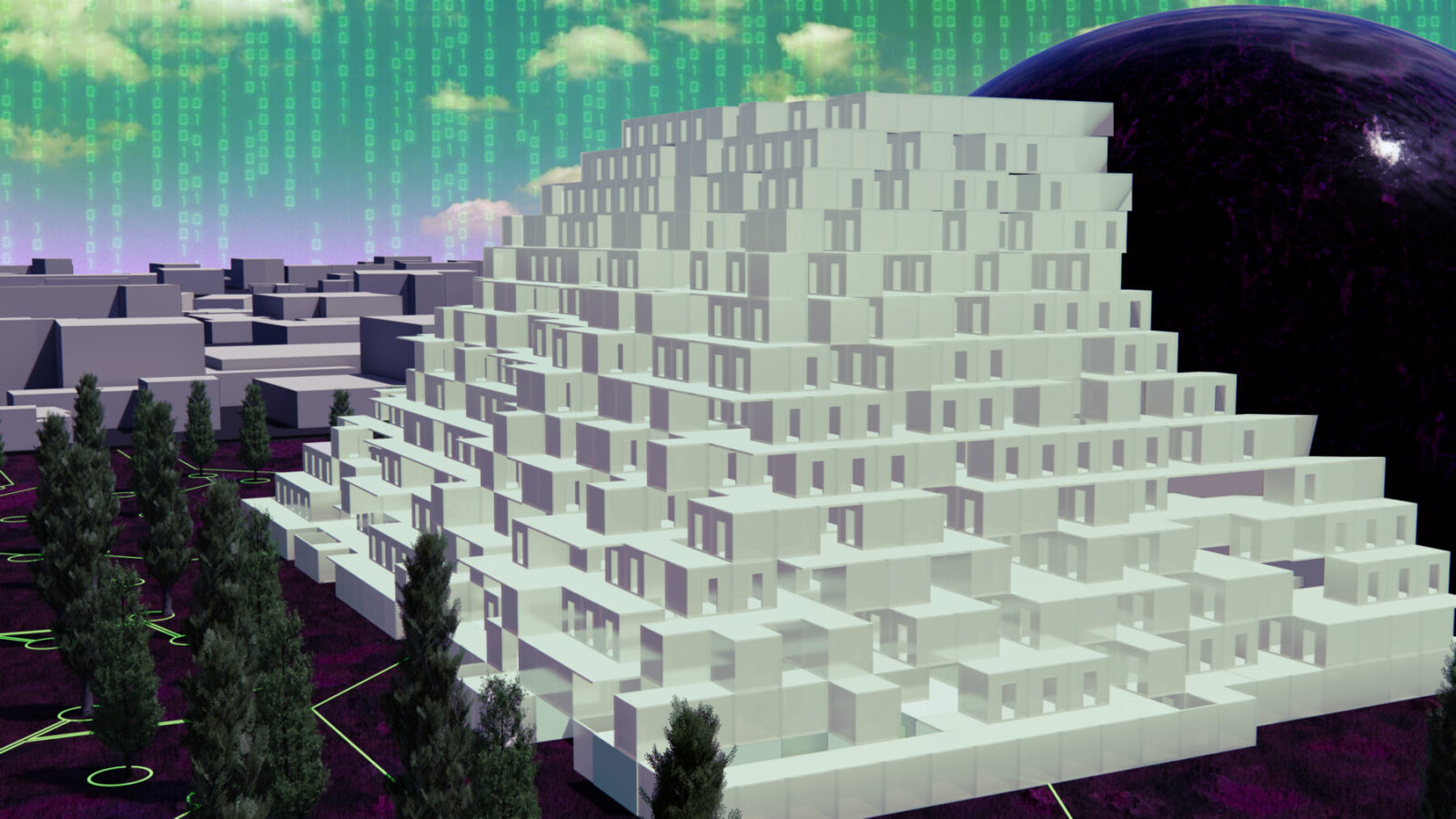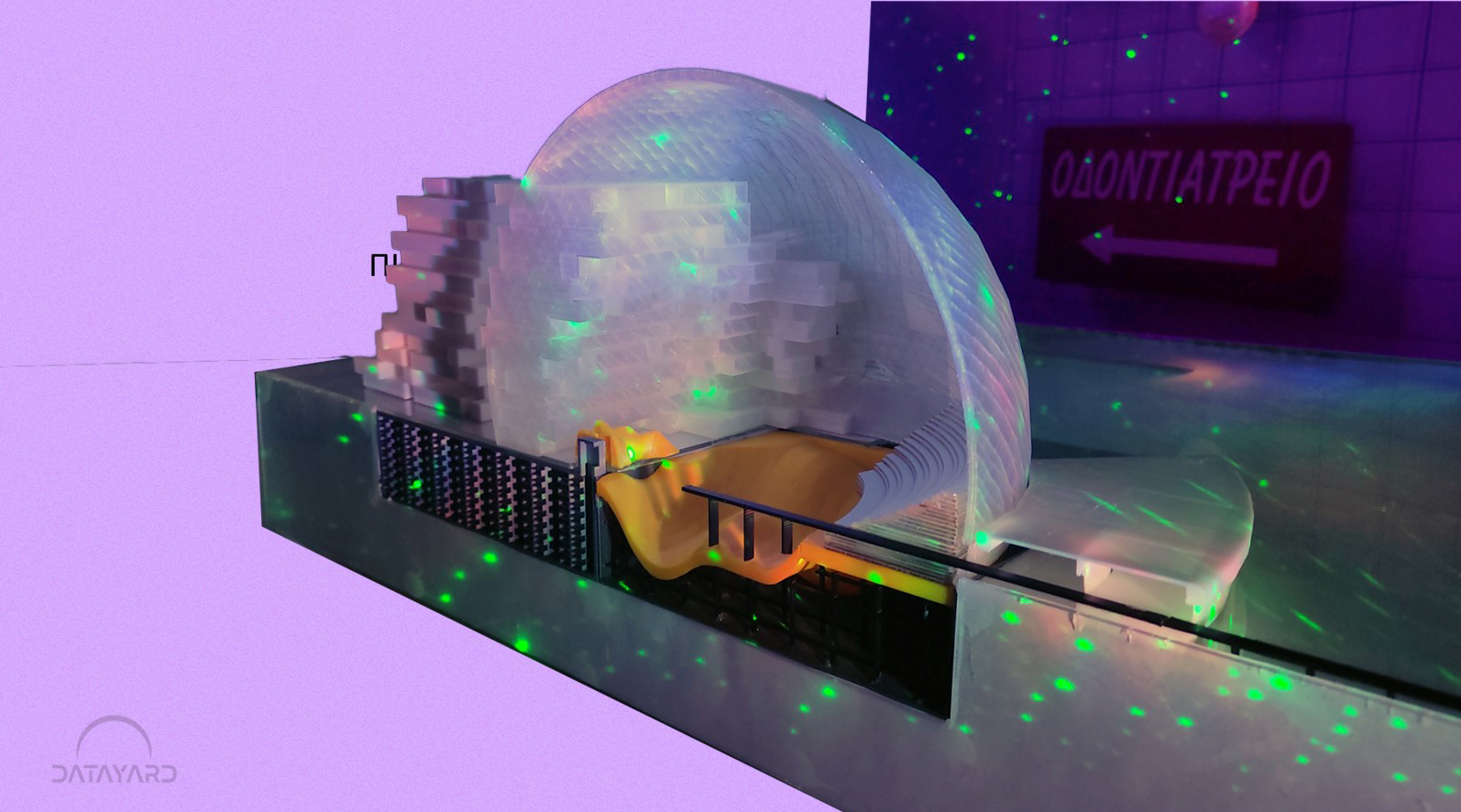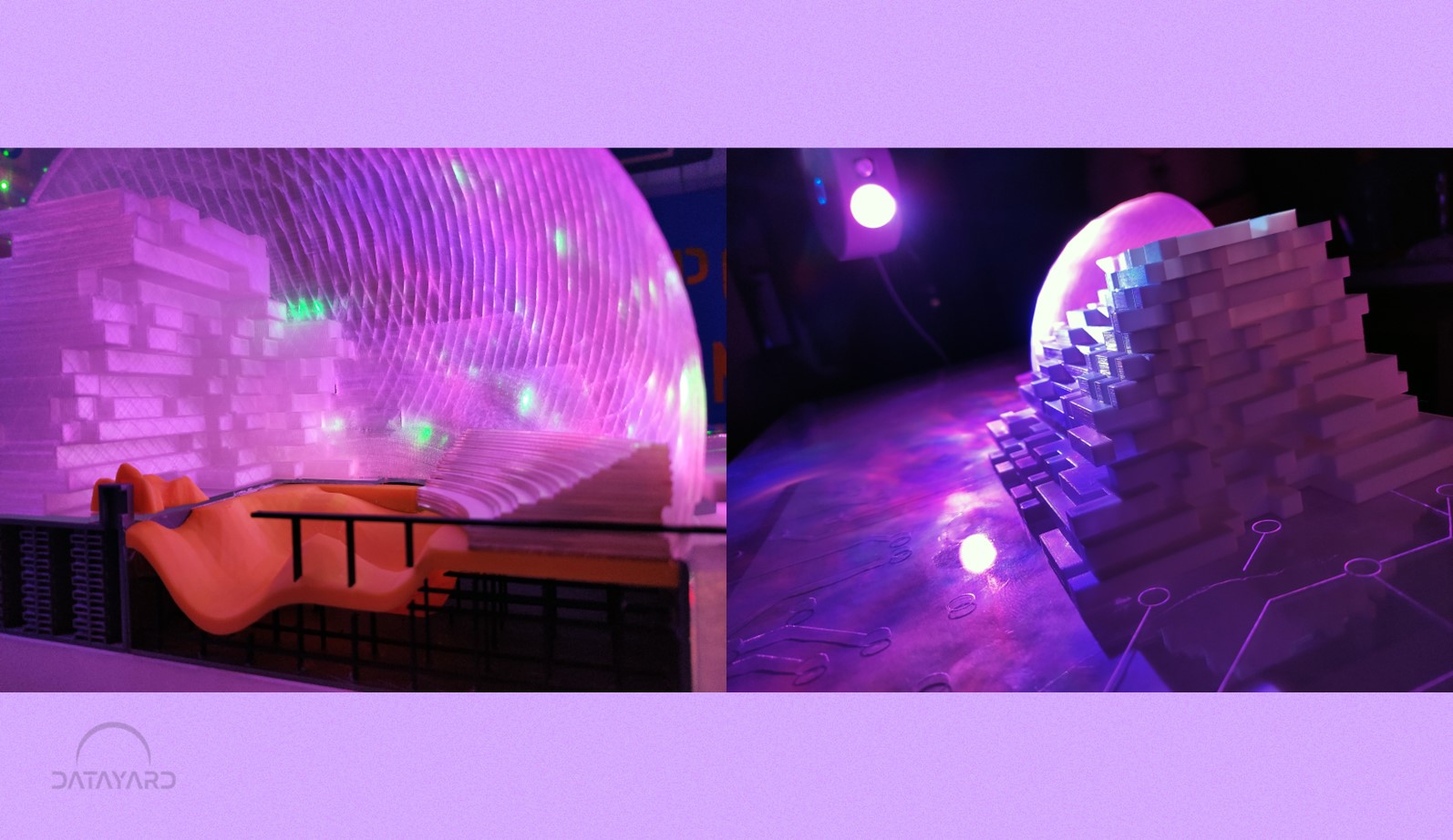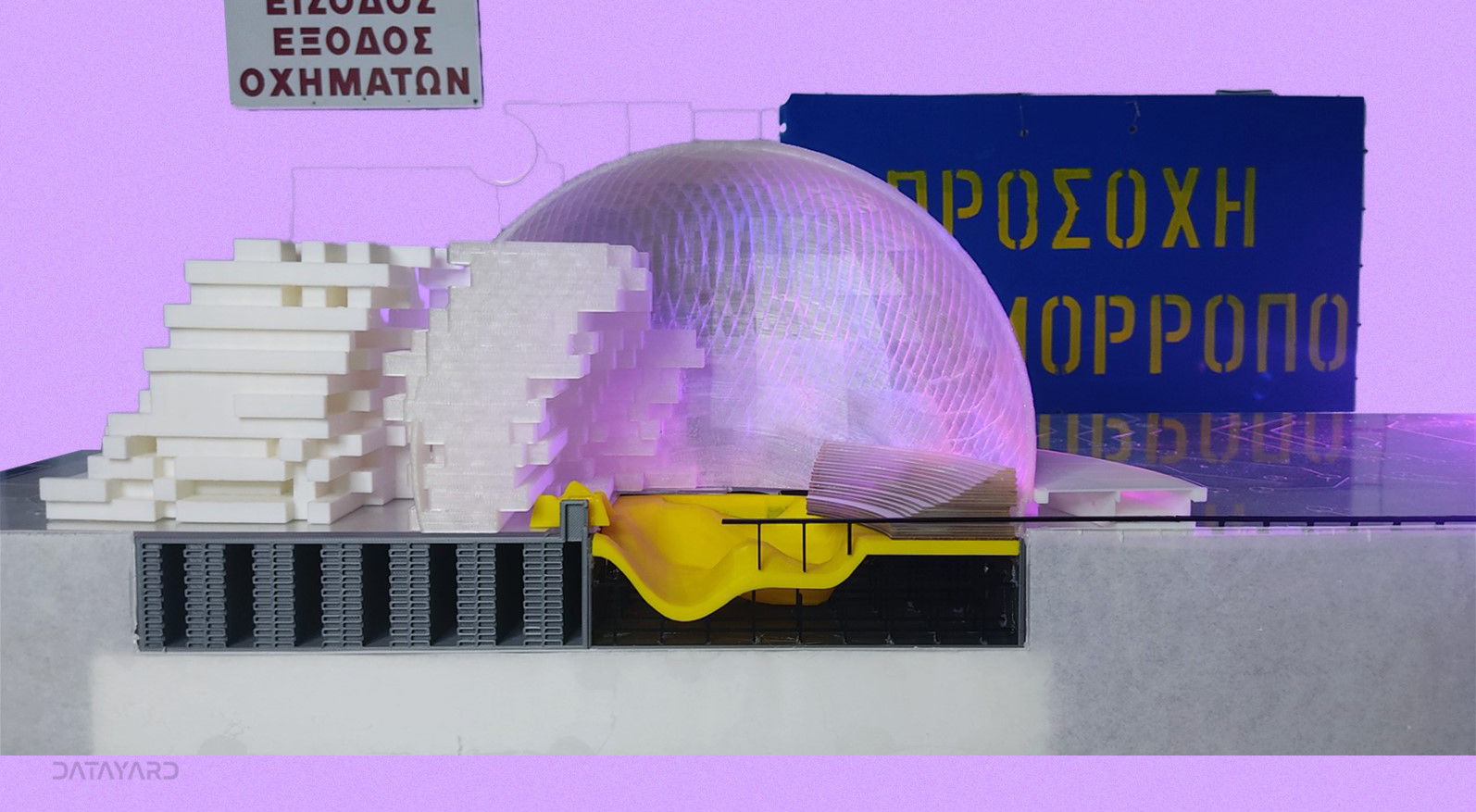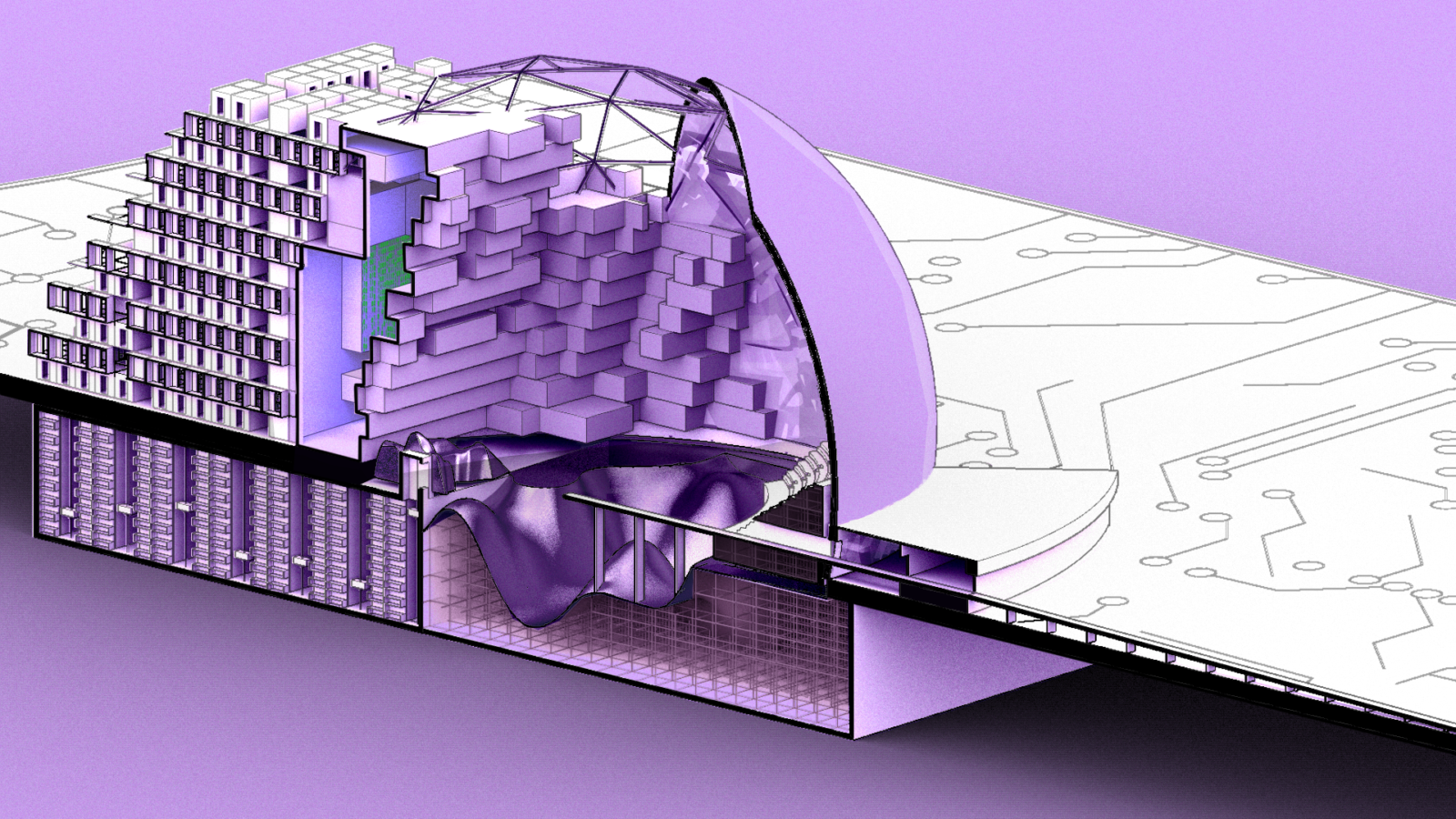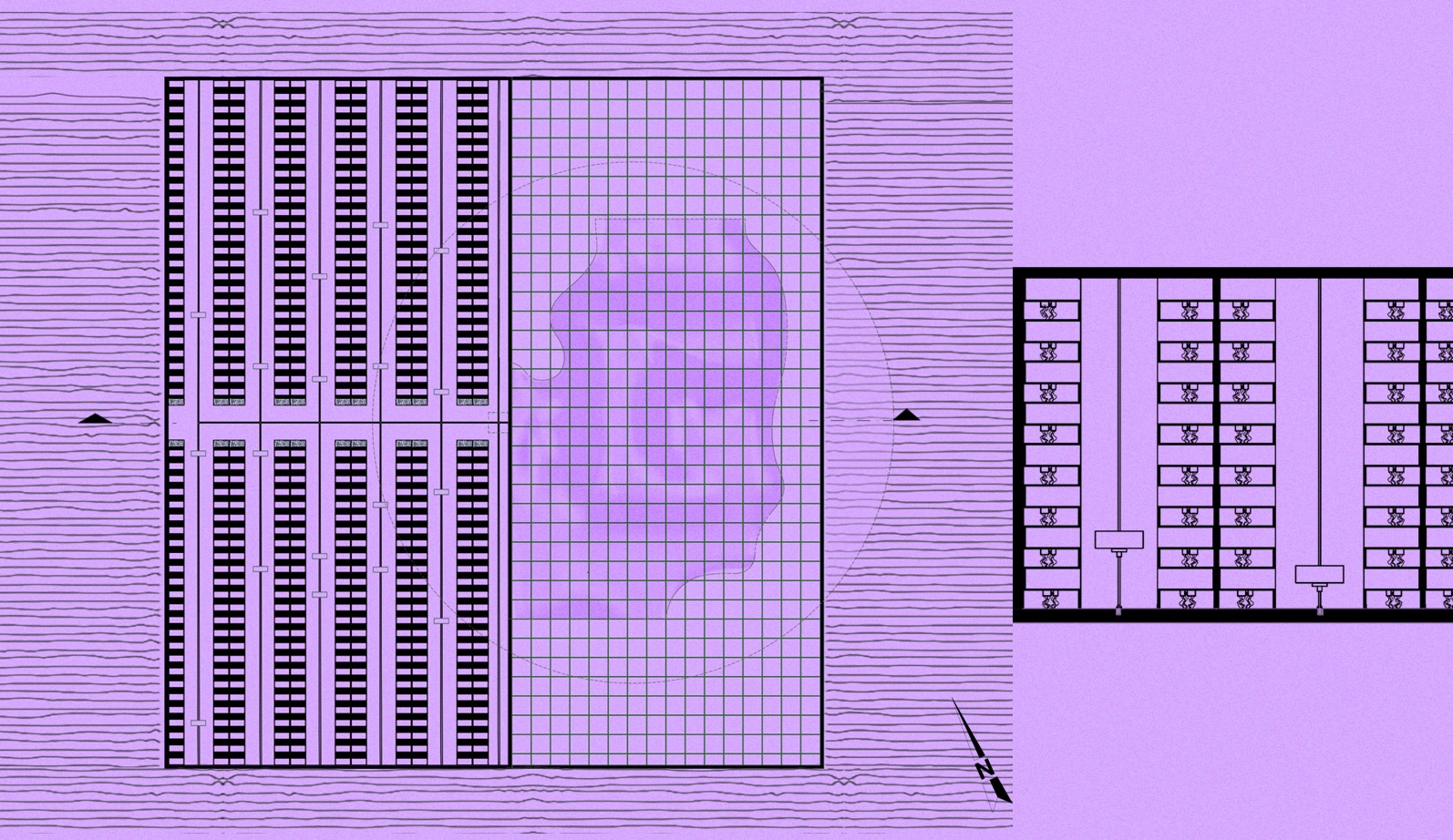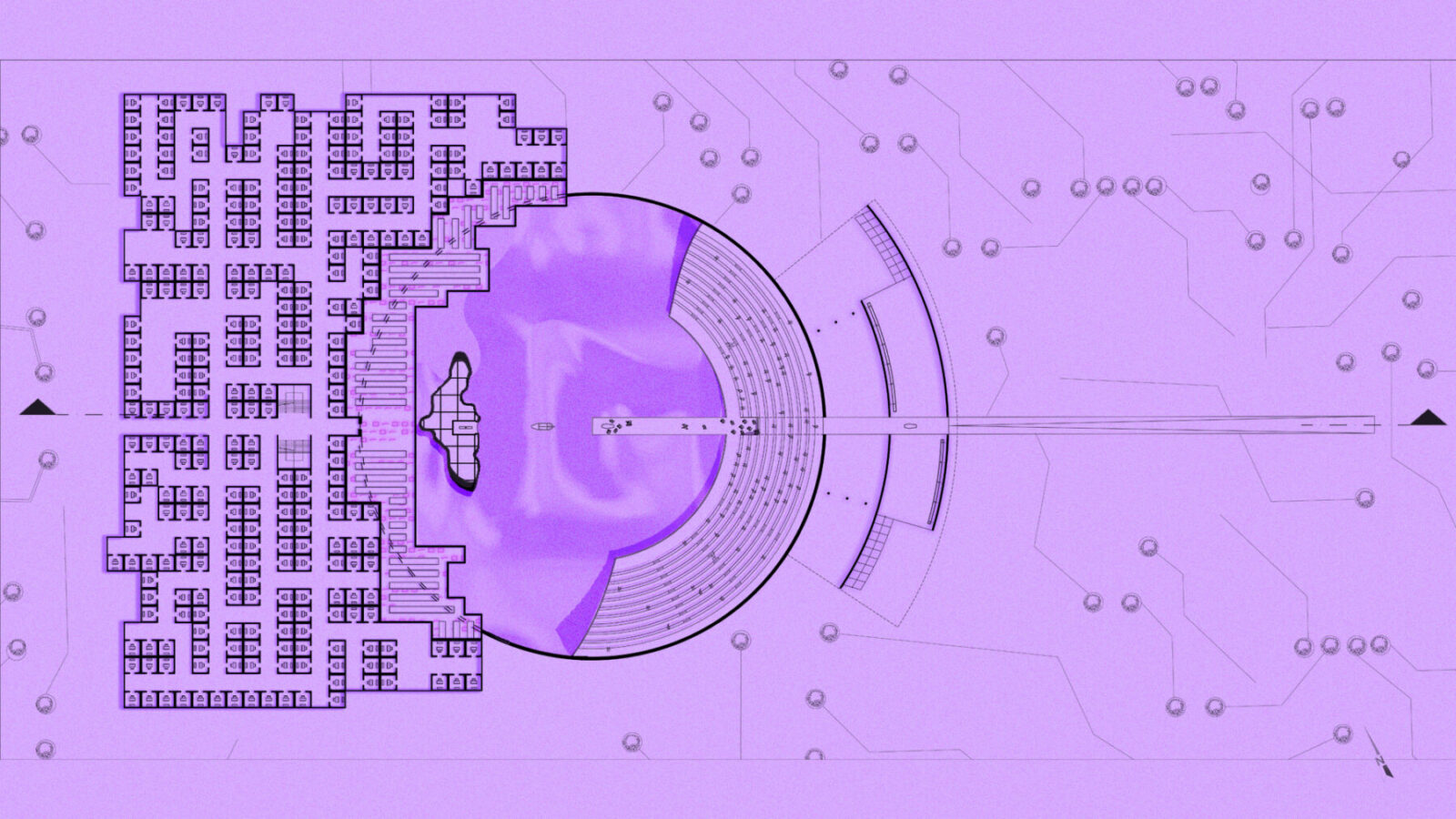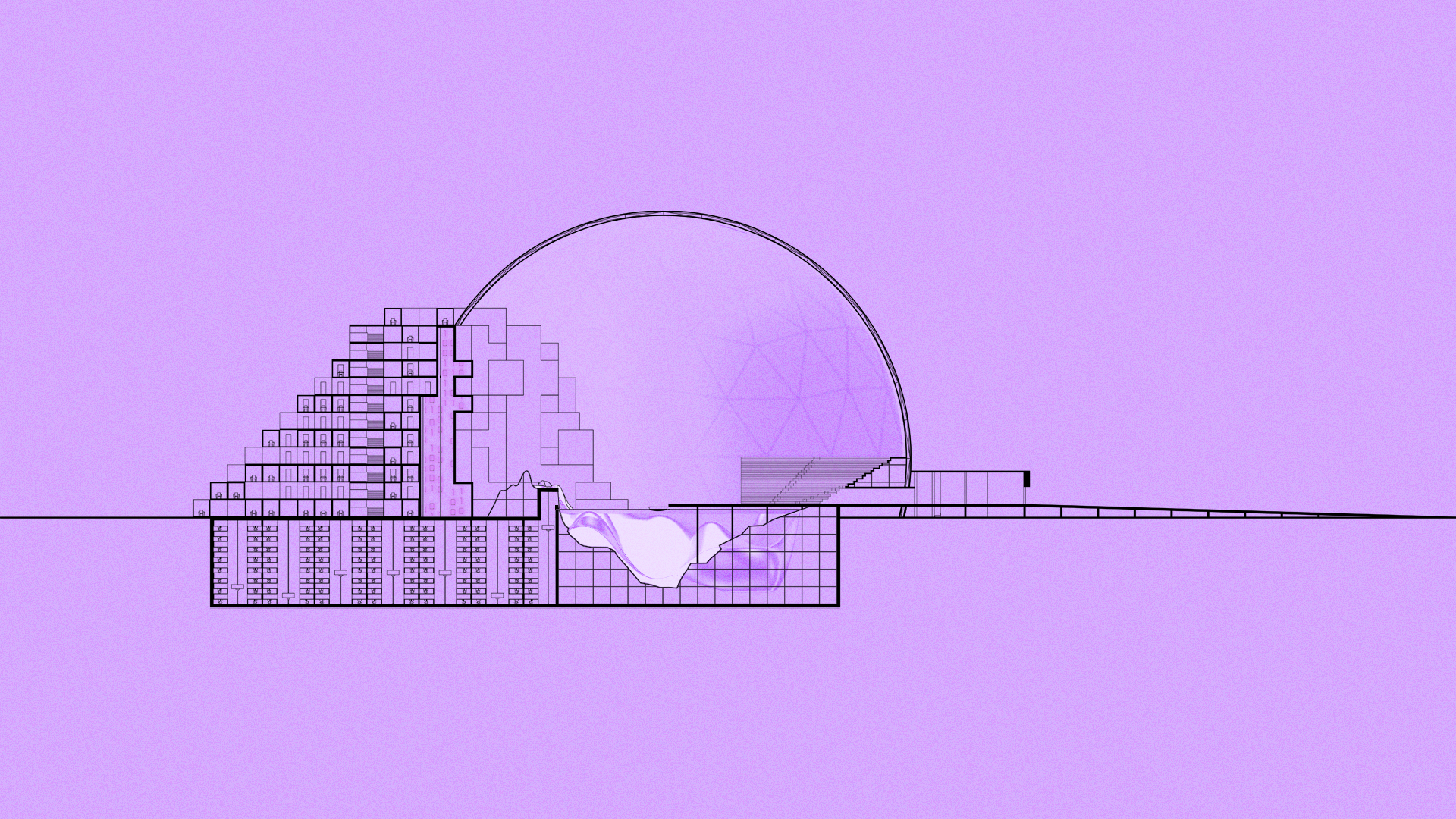This diploma thesis project by Emmanouil Amariotakis & Konstandina Anagnostou is titled “ΙΝ DATAVERSE WE DIE IN DATAYARD WE LIVE”. This work is about a cemetery that exists in the future. They focused on the personal data and they created a datayard in the urban area of Eleonas by designing a memorial route in which the human spirit remains.
-text by the authors
In a future where all our personal data is recorded by every electronic device we use. In a society dominated by Data. We live in the DATAVERSE!
Our world is now dominated by large corporations that provide us with an exciting and organized experience on Earth. Parnithon, the corporation that acquired the rights to manage human death, chose Eleonas as the site for this modern cemetery.
In the 18th century, cemeteries were located near urban centers and had a monumental character. At the beginning of the 21st century, when belief in the immortality of the soul and spirit began to wane, cemeteries moved away from urban centers and appeared more discrete.
Eventually, the social meaning of the cemeteries changed from “the sacred and immortal side of the city” to the “other city.”
The Datayard returned to the urban fabric and acquired a more prominent and accessible character. Eleonas was chosen because it could already be characterized as a cemetery of urban life, as it was the place where remains of household appliances and even parts of machines and cars were deposited. At the same time, it is also a dead former industrial area in the heart of Athens. A place flooded with symbols and memories of the city.
Let’s look at what the Datayard looks like.
It all starts with a rising corridor that leads to the vestibule of the dome. When all the people have gathered, they accompany the deceased to the monumental dome where the ceremony takes place. The deceased is placed at the end of the long corridor. The place of the ceremony had the shape of an amphitheater.
The farewell ceremony could also be called a performance. The deceased is the silent protagonist, and those present perform the farewell process. Those who experience the mourning process are the performers.
Those present choose their places in the hall. Others stay with the body at the end of the corridor, and still others choose the most prominent seats from which they can participate in the process from a distance.
The next phase involves the Acheron5 – a large body of water where the dead body is transported to the rock by boat.
A large portal has been carved into this rock, leading to the room where the corpse is converted into energy using M.F.C., a process in which bacteria break down organic material and convert it into electricity.
At least until 2022, this process has been studied for the management of urban wastewater. According to some religions, the body is the home of the spirit and soul. However, when someone passes from analog life, their body can no longer form that form of home. However, through M.F.C., it has been possible to transform the body into energy that supplies the Datayard where the spirit will reside from now on.
In the Datayard the human spirit remains forever!
By artificial intelligence the basic characteristics of a deceased can be reproduced, which offers the possibility of the communication with the living! Communication spaces are recurring structures where the living meet and communicate with the spirits of the dead. These structures increase as the number of dead in the Datayard community increases.
Gradually, an oncoplasty resembling a modernday Ziggurat emerges.
These structures include a seat and table for the visitor and a table for the hologram of the deceased. Simulators are used to merge the two tables into one, creating the impression that we are all in the same room around the same table.
In designing Datayard, care was taken to achieve the best visual impact in an optimal time frame.
A more scenographic approach was chosen. Metal frames that follow a 3*3m canvas, according to which the entire spaces are organized, support both the organic surfaces that represent the cave and the gate, and the farewell place. This approach is based on myths and symbols around death, which in the past have created a narrative around the emotional charge that dominates it. For example, the cave of the underworld or the bottom of the Acheron5 is not a chiseled rock.
Modern, technologically advanced societies are largely shaped by multinational corporations. These have penetrated all aspects of human activity and created a global esthetic that largely determines people’s wants and needs.
The user is the object of study while serving corporate goals by registering individual personal information on websites and social media that are offered for free. Virtually everything is controlled by multinational corporations in a way that directs consumers and completely determines their lives. However, until
Datayard was created, death was the only condition under which no one could control people.
– By creating individual virtual profiles, an algorithm defines the mindset of a dead person who is incapable of doing anything else.
– While the system eases the sense of loss and pain of the bereaved, it exploits the living by monitoring their psyche and the problems shared with the hologram.
Book your spot at Datayard and win eternal communication with your loved ones!!!
Project type Diploma thesis
StudentsEmmanouil Amariotakis & Konstandina Anagnostou
SupervisorPanos Dragonas
University School of Architecture, University of Patras
Date July 2022
READ ALSO: Ένα παιχνίδι διαμονής_Ανασχεδιασμός της Πανεπιστημιακής Κατασκήνωσης ΑΠΘ | Διπωματική εργασία από τη Λήδα Δημητριάδου και τη Ευγενία Μαλάμογλου
